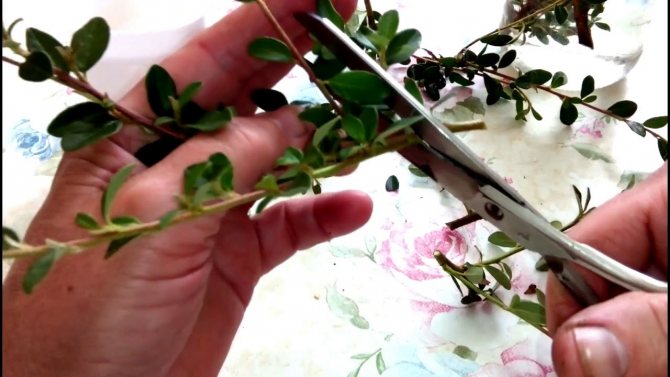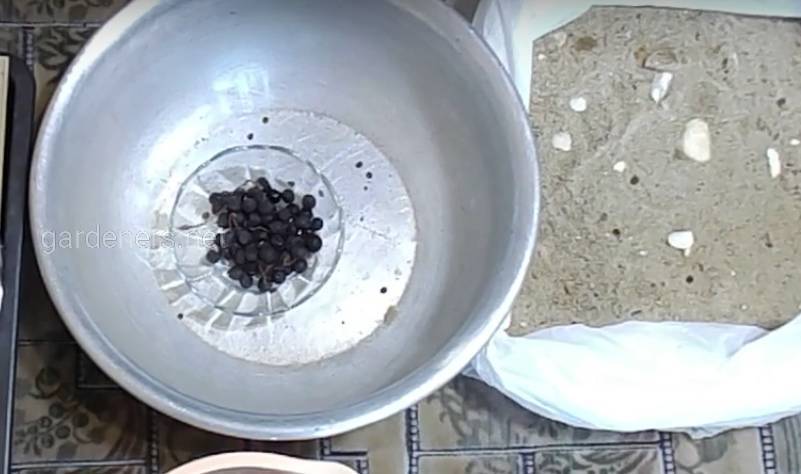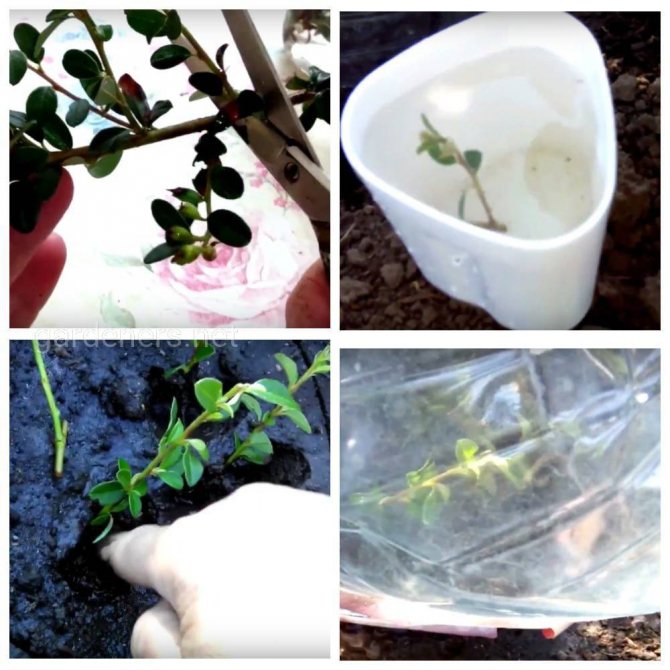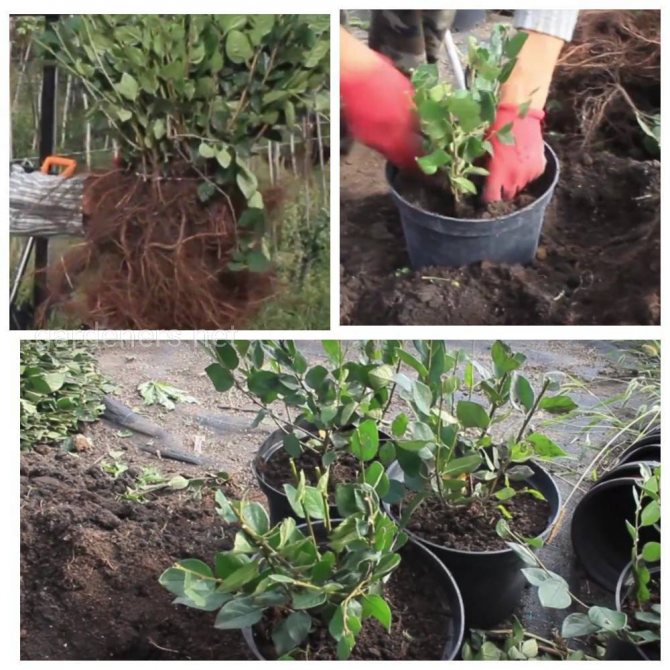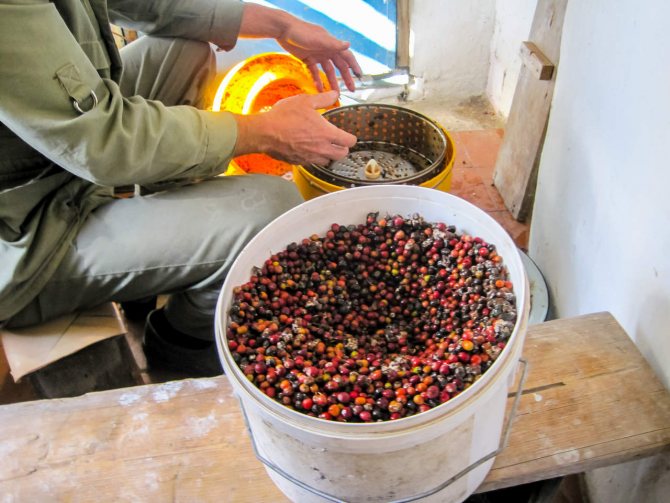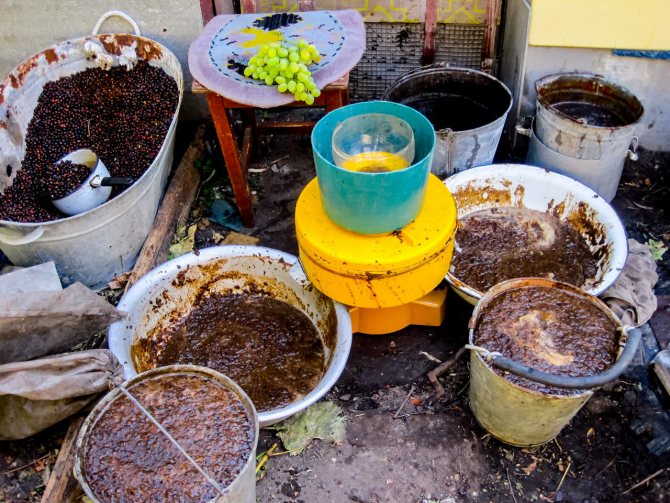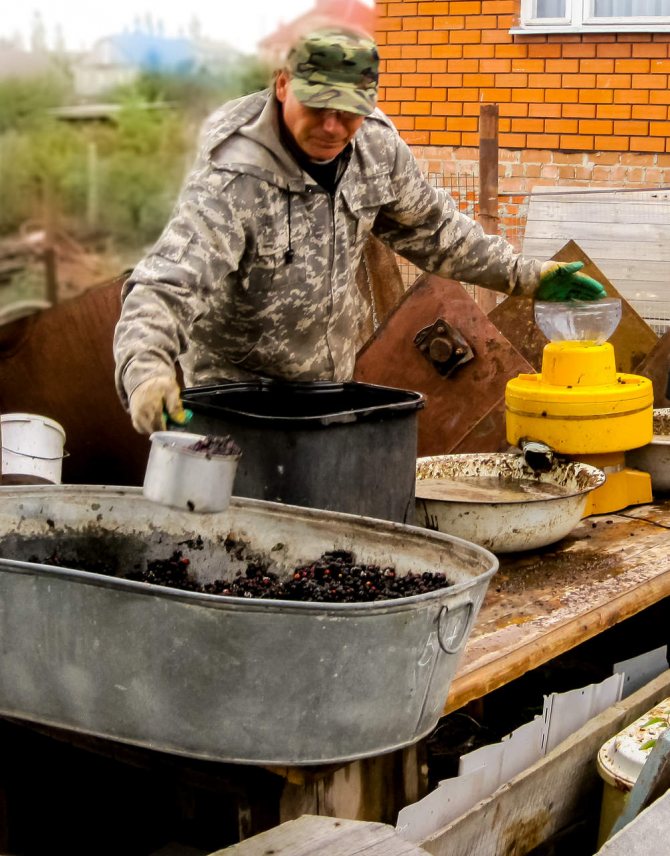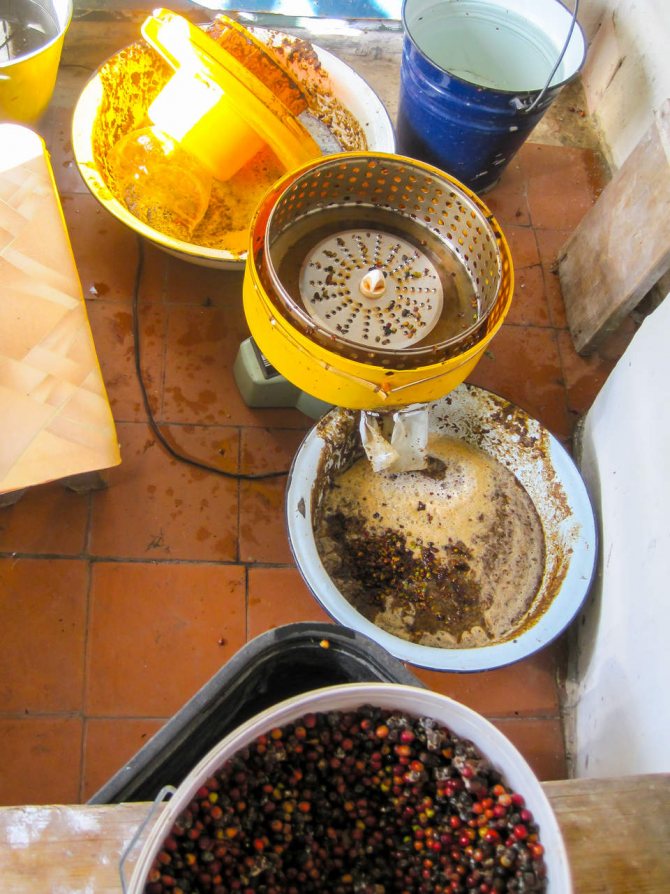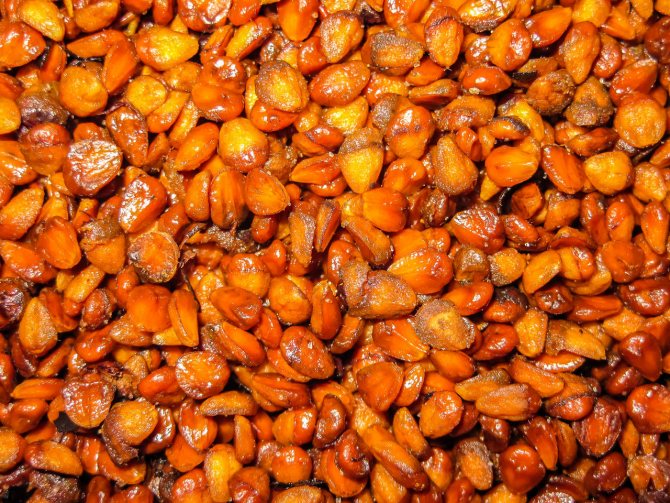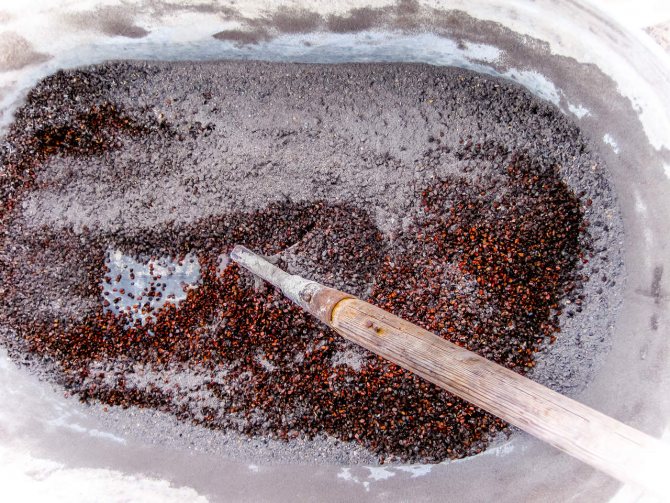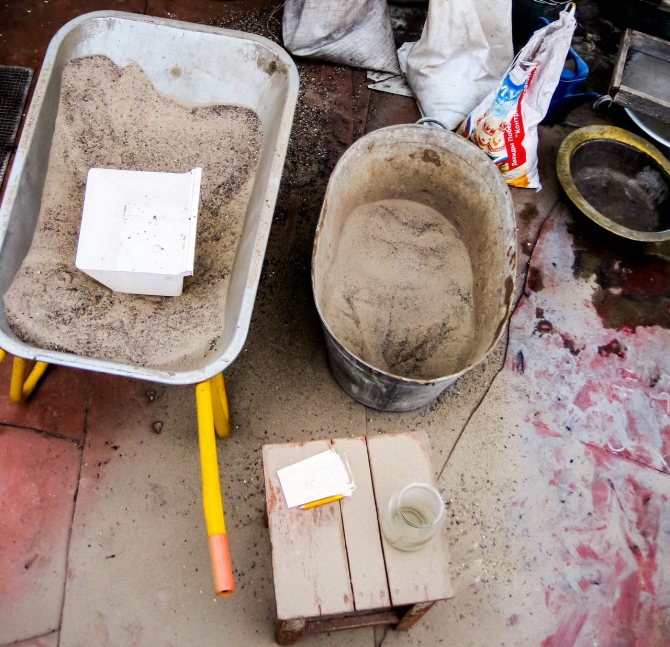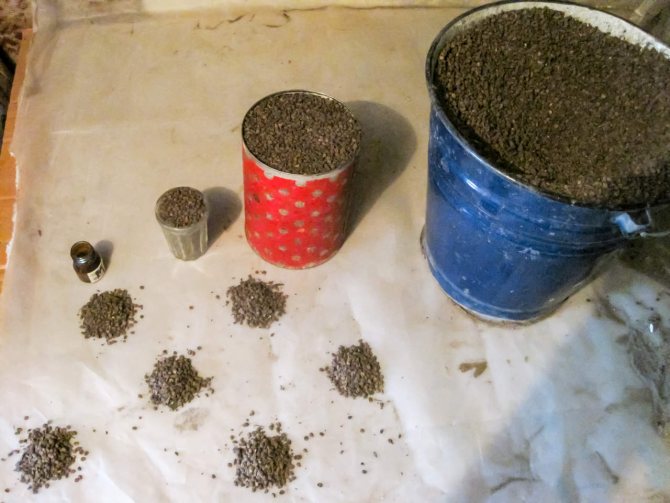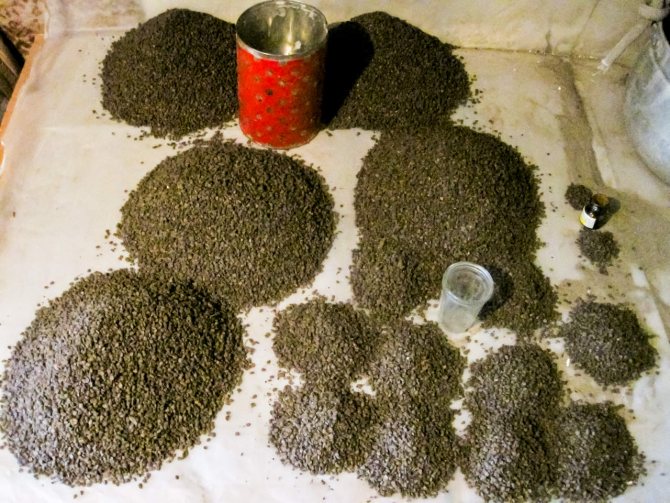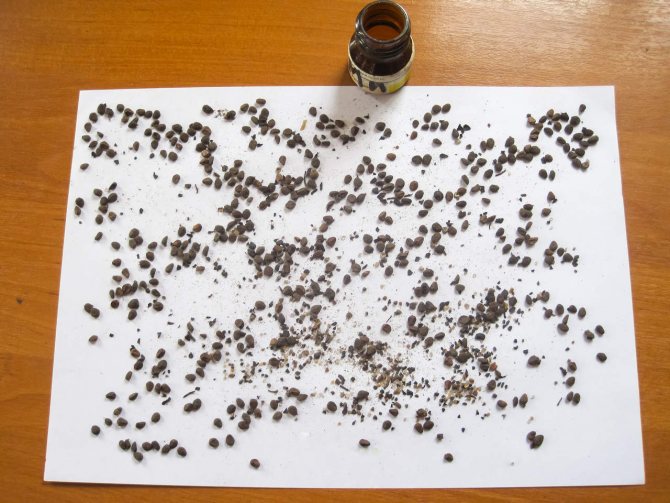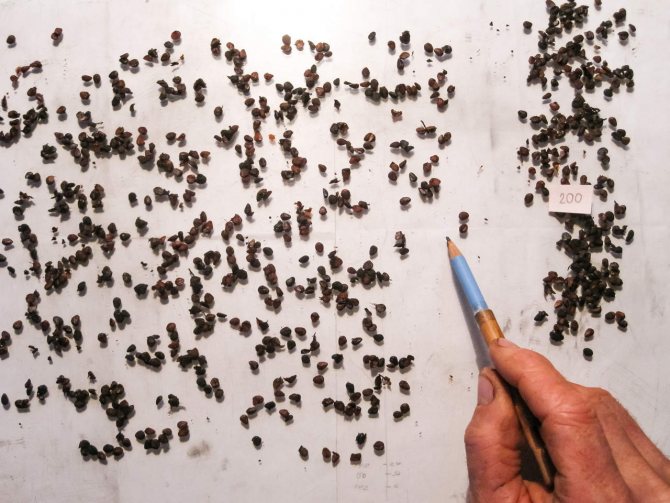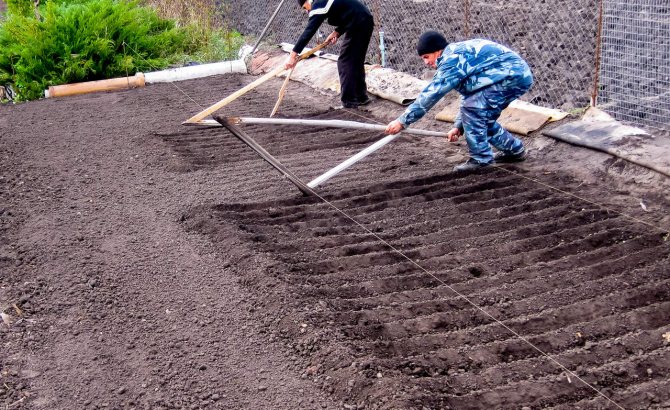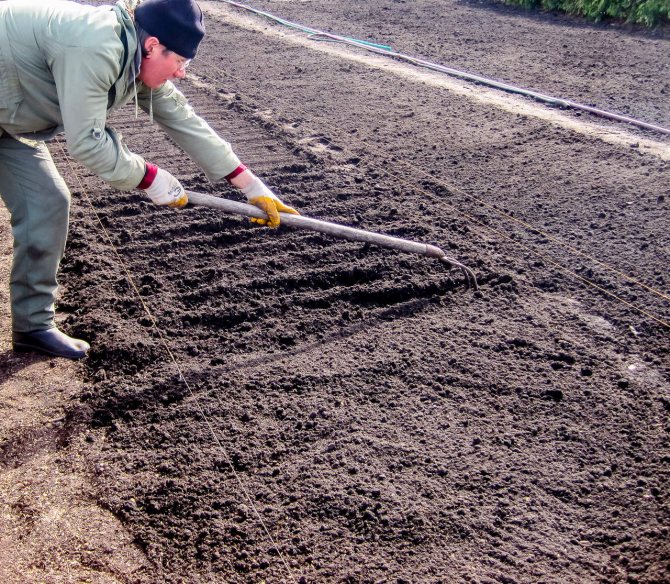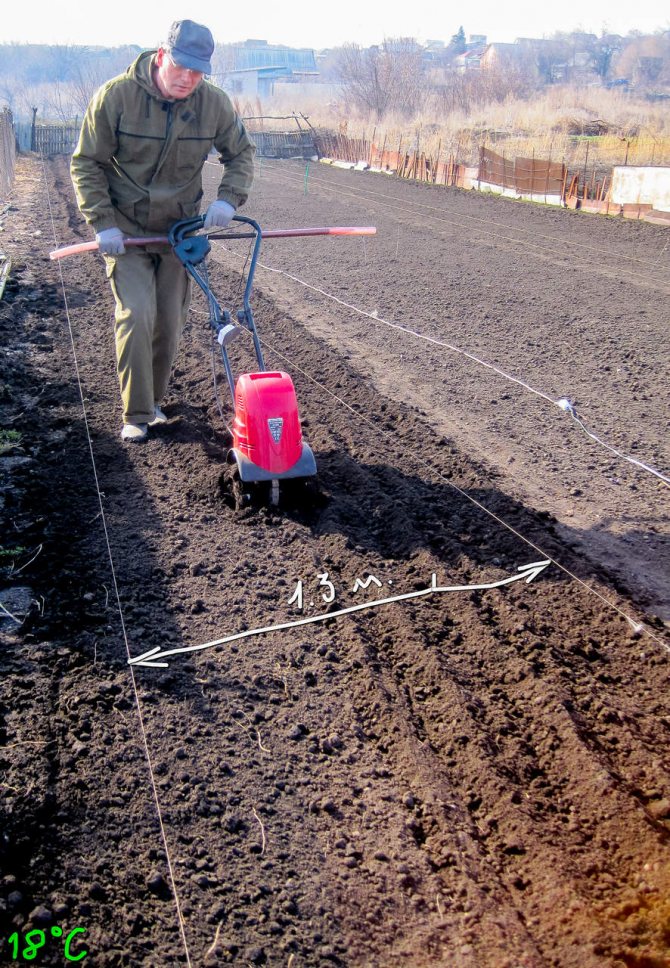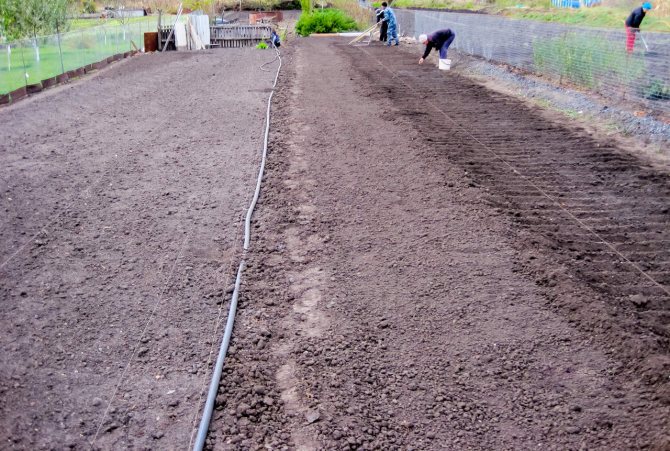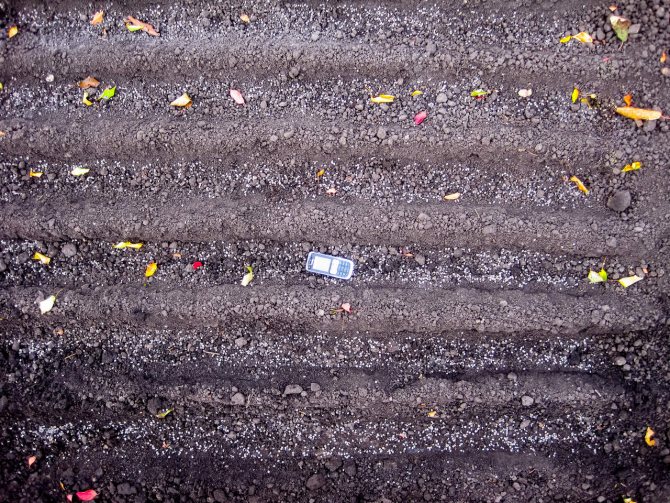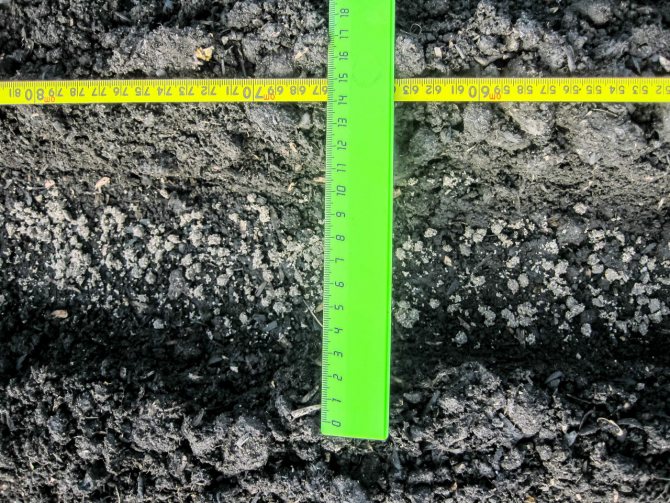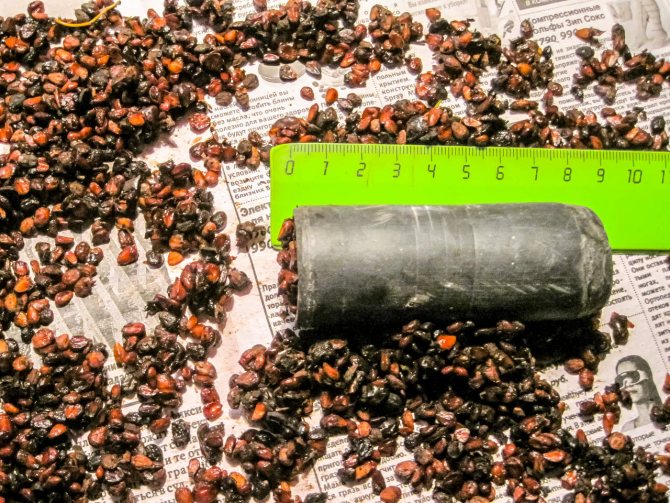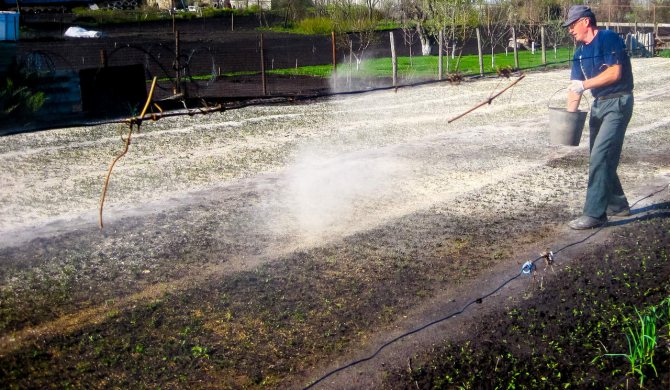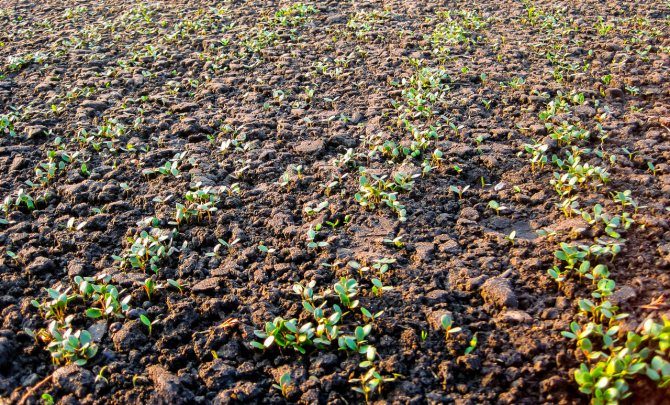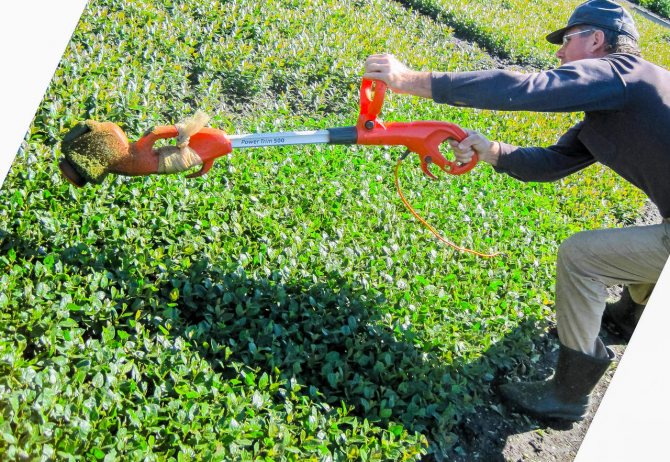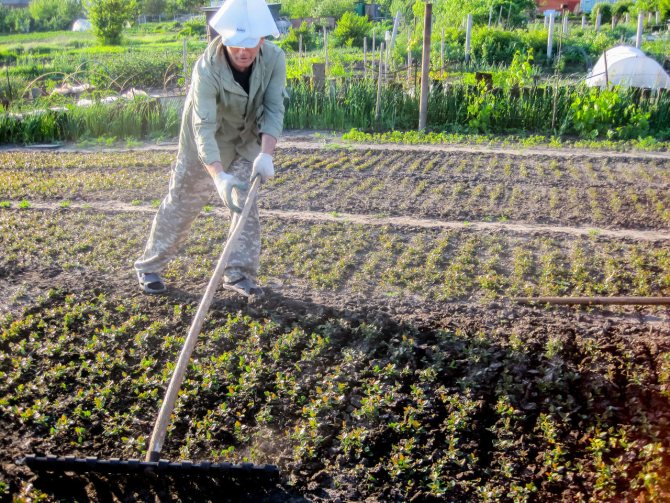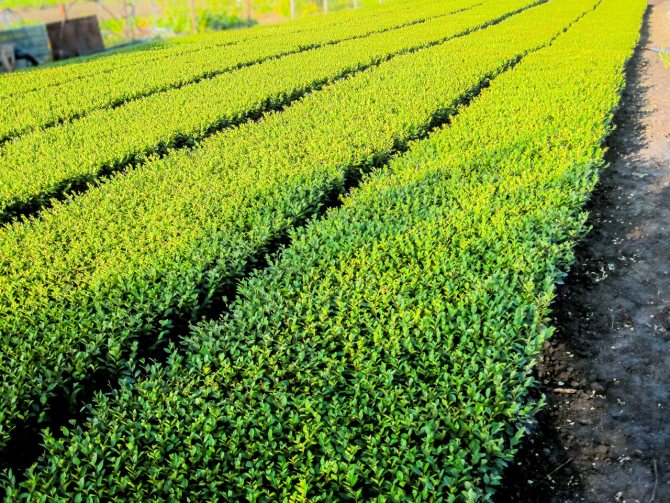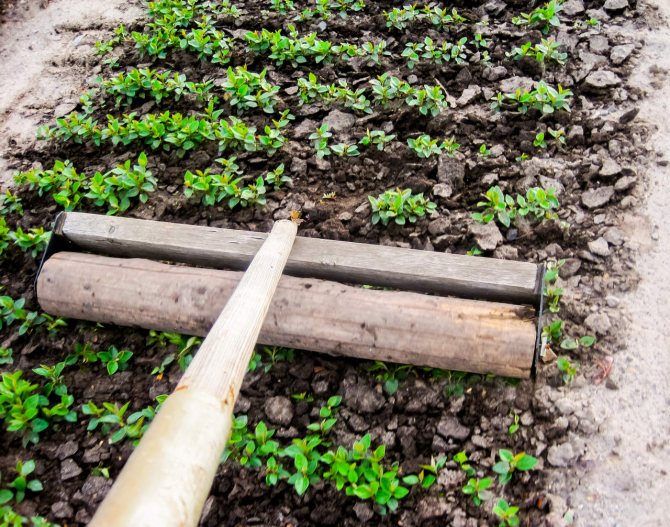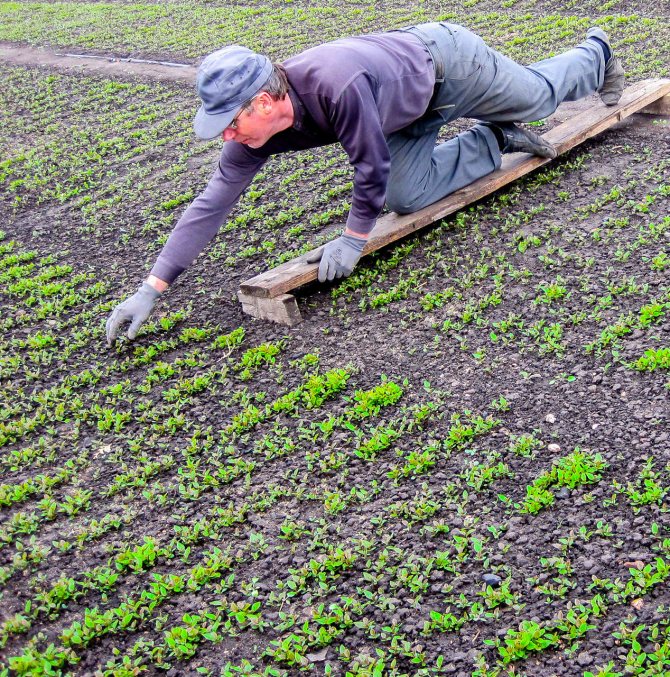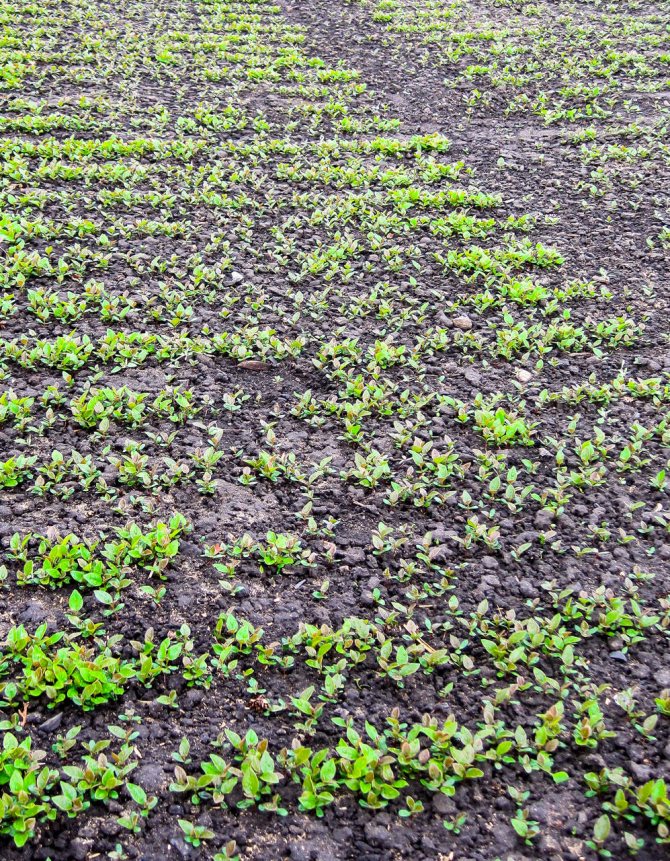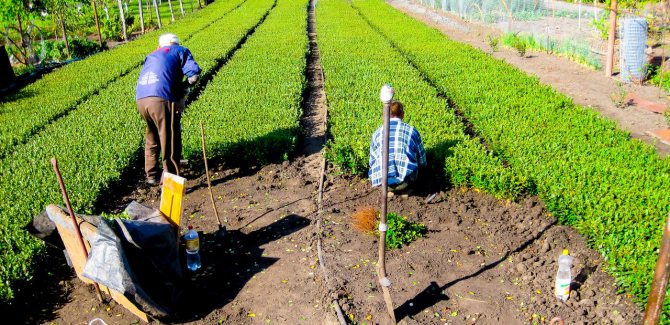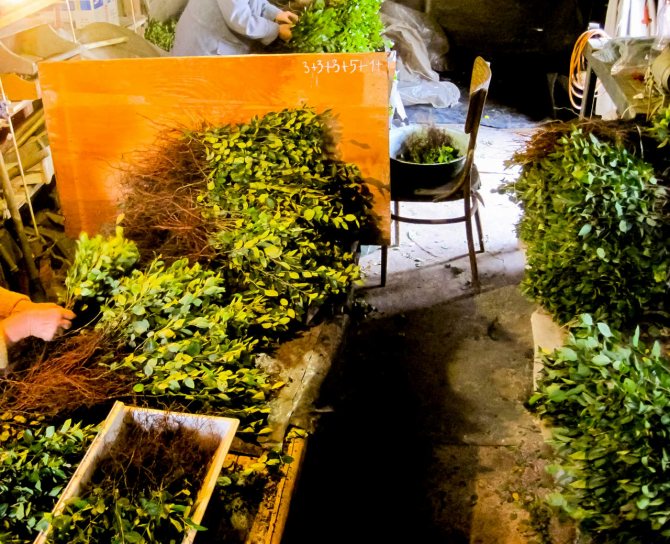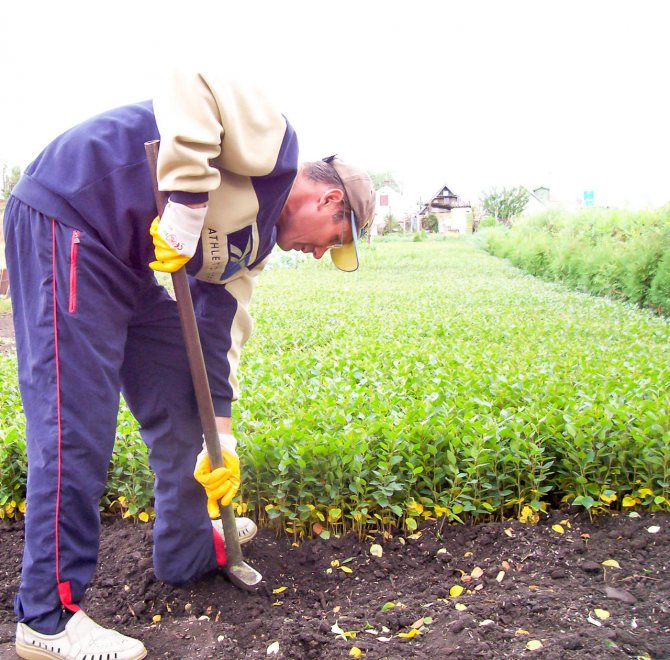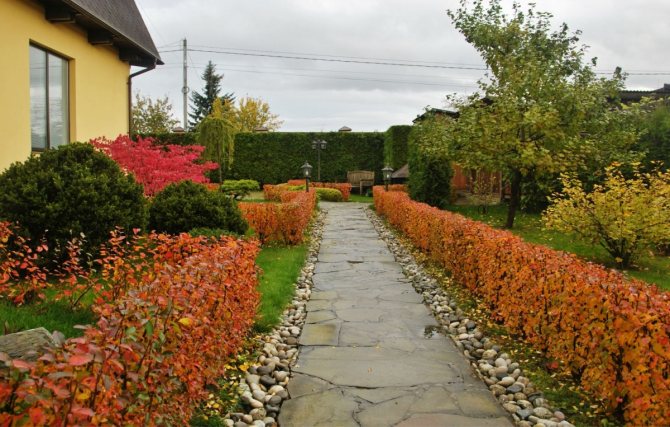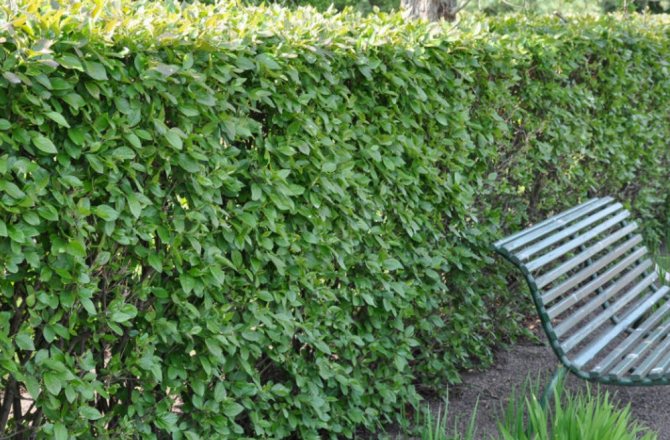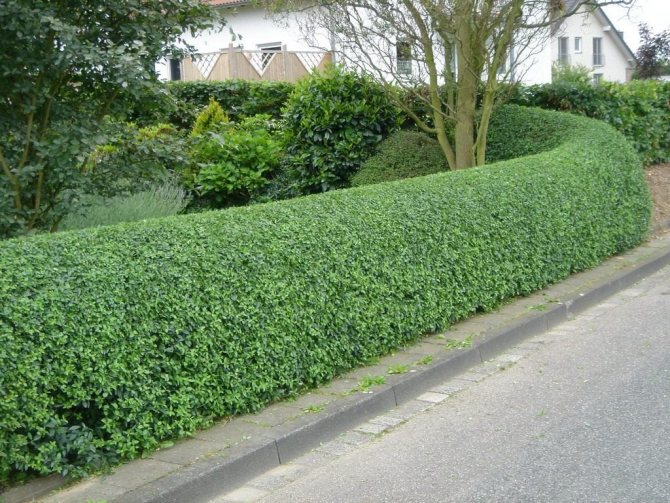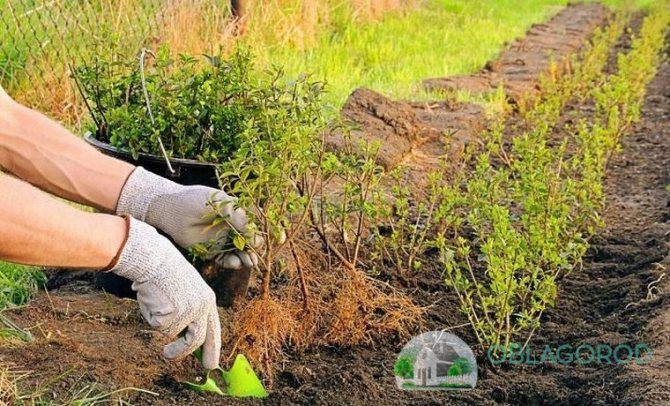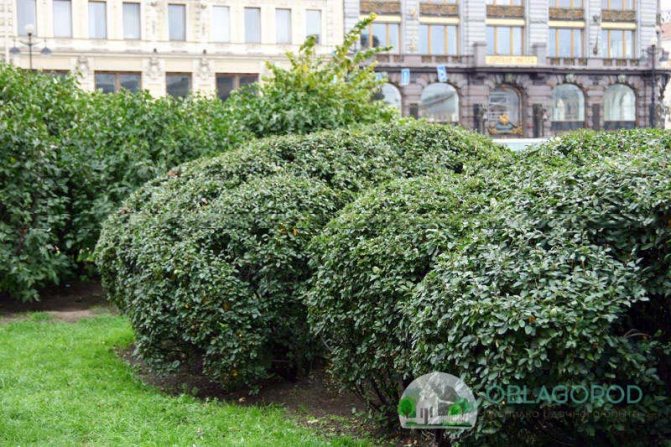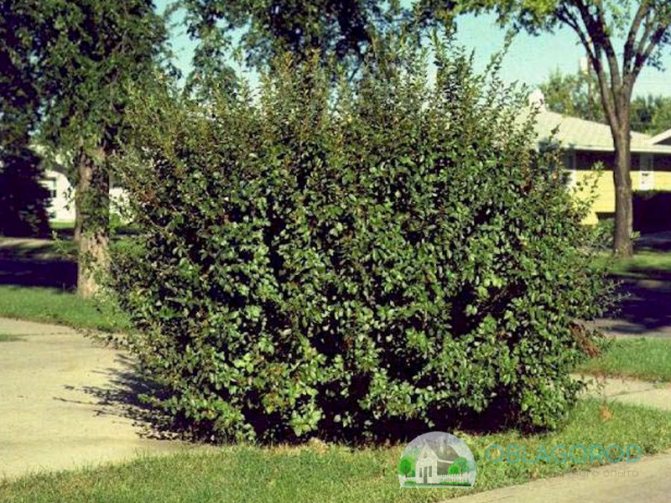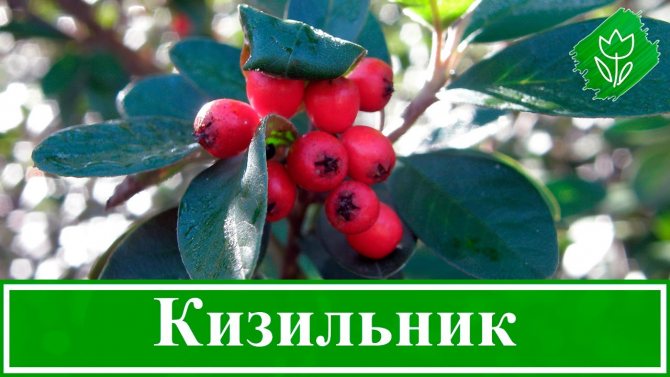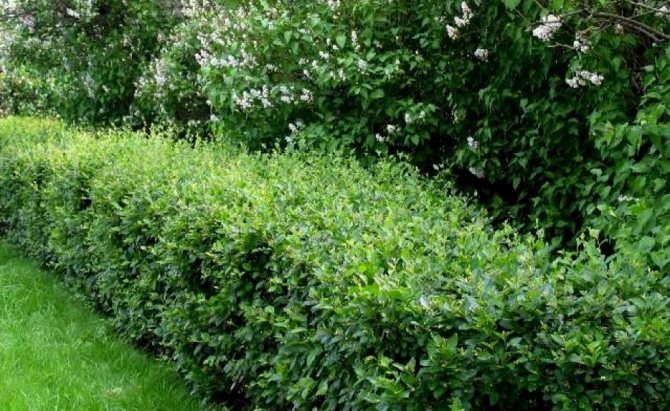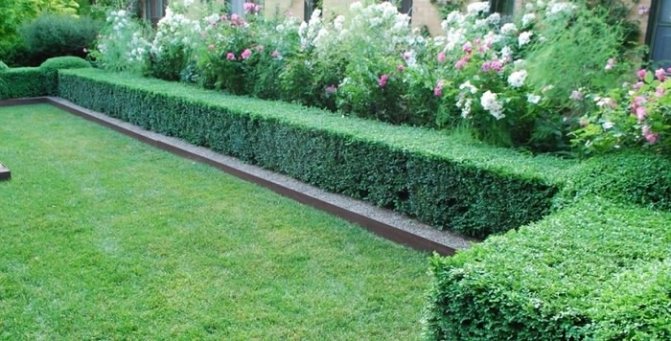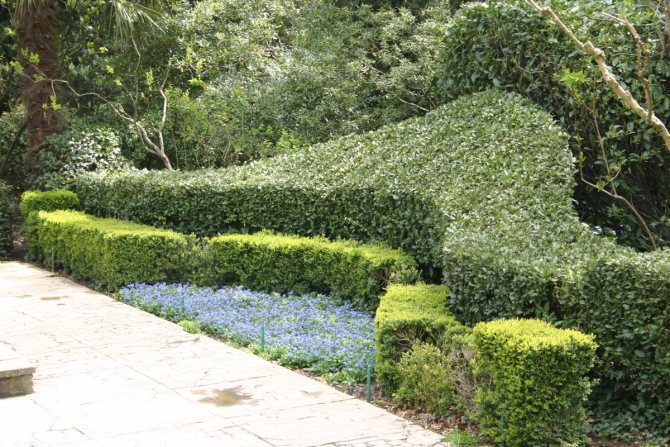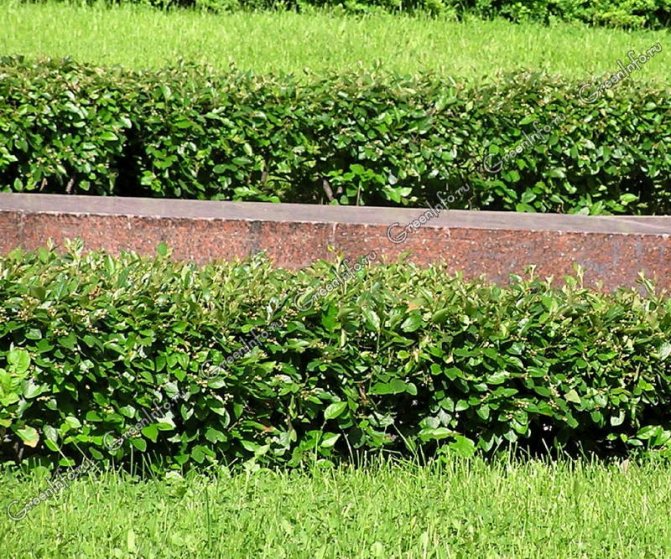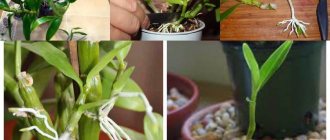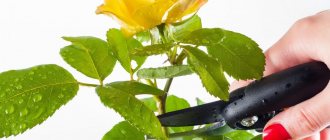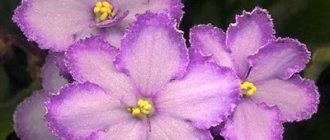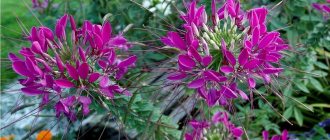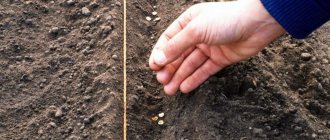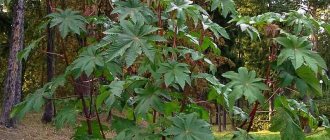The cotoneaster belongs to a variety of slow-growing shrubs. Differs in bright blooming in the form of pink flowers. The leaves of the shrub have a rich green color. In the autumn season, oval-shaped fruits with a diameter of 1 - 1.5 cm, red or black, grow on the cotoneaster. You should be aware that edible fruits grow on some types of cotoneaster.
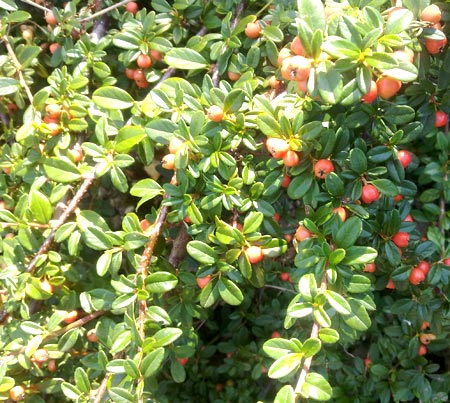
This is what bushes and cotoneaster berries look like.
Reproduction of cotoneaster by cuttings
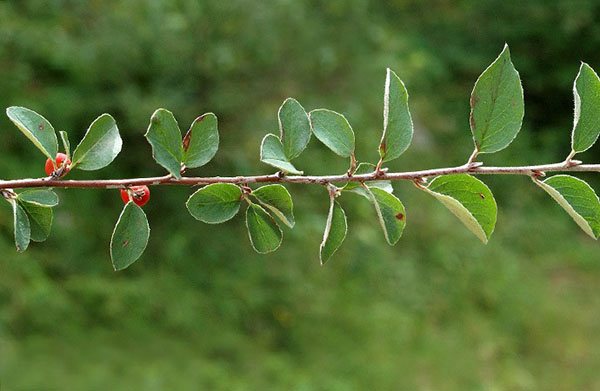

With this method, it is necessary to cut off green cuttings from the center of the stems (which are one year old). It is best to carry out the procedure in the summer, at the end of June. Some of the leaves need to be cut off, about a third. The prepared branches are kept in a solution that stimulates the formation of roots.
For planting, prepare containers filled with a mixture of peat and river sand. The cuttings are placed in the soil at an angle. After that, water is well watered and greenhouse conditions are created. To do this, it is enough to cover the branches with a jar or part of a plastic bottle. The greenhouse is removed only for a short time for airing, the plants are regularly watered.
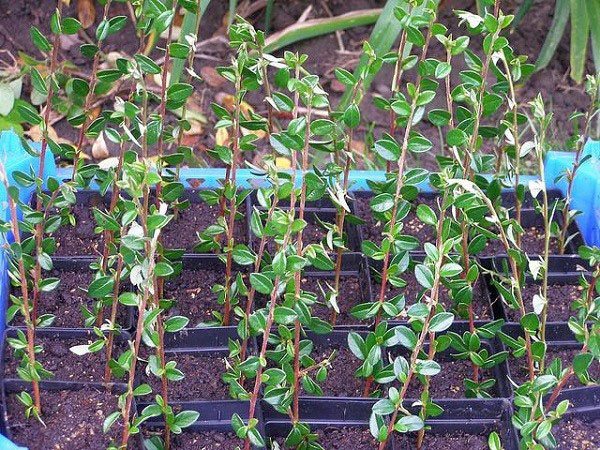

Propagating a cotoneaster by cuttings is quite simple and easy. The plant does not require any special care. Cuttings are planted in open ground only the next year. Since it will be difficult for them to take root in new conditions without a strong root system.
When planting cotoneaster cuttings, you need to take care of drainage in the recesses. When water accumulates at the roots, they are quickly affected by rot. If the soil on the site is too acidic, you can neutralize it by mixing in lime.
You can go the other way by cuttings. For this, strong, woody branches are cut in the fall. They are stored in cool conditions until spring. You can keep the cuttings right in the refrigerator. Further, the growing procedure is exactly the same. The twigs are treated with a root formation stimulator, planted in prepared pits. By the fall, the cuttings will give good roots.
Top dressing
Plant care includes timely feeding. With the first spring heat, it is recommended to apply fertilizers under the plant: for each square meter - Kemira-wagon (100 g) or for a bucket of water - 25 g of urea. In the summer, before flowering, potassium sulfate (15 g) or granular superphosphate (60 g) is charged into the soil per square meter of planting.
It is also good to feed the cotoneaster with slurry (one part of manure, six - water), bird droppings (one part of droppings, ten - water). This type of fertilizer can be applied to the soil before planting, as a summer top dressing before and after flowering. Since August, feeding is no longer done so that the shoots have time to get stronger and woody by winter.
Sowing cotoneaster seeds
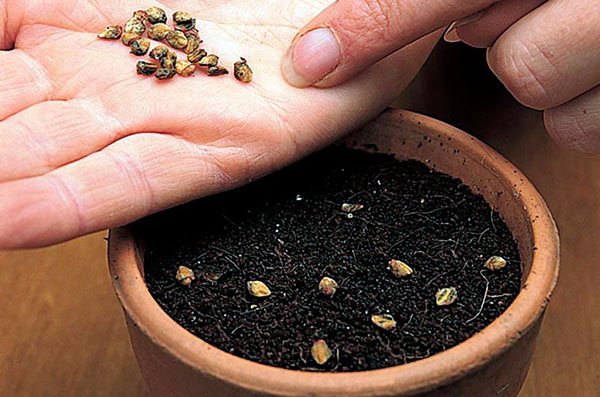

This beautiful shrub bears fruit abundantly with red beaded berries, in which the seeds are hidden. Cotoneaster can be propagated by sowing them, but this is not the most productive method. The seeds germinate very poorly, a significant part does not germinate, and the sprouts themselves slowly grow in growth. To get a sapling of sufficient size, you will have to be patient and wait 3-4 years. Cotoneaster propagation by seeds is more often practiced by breeders engaged in obtaining new varieties of plants.
If difficulties are not scary and there is a desire to try this method, then you need to follow these tips:
- First, the berries wither a little. After that, the pulp is much easier to separate from the seeds.
- The refined grains are washed to remove it completely.
- The seeds are rejected in order to separate all unpromising specimens at this stage. This is not difficult to do, it is enough to fill the planting material with water and leave it for a while. Seeds that float on the surface will not sprout, they are immediately thrown away.
- The grains need to be stratified. For two months they are kept at a temperature of 30 ° C, and then gradually it is reduced to -5 ° C.
- The cotoneaster seeds prepared in this way are sown next fall by about 3-5 cm in depth.
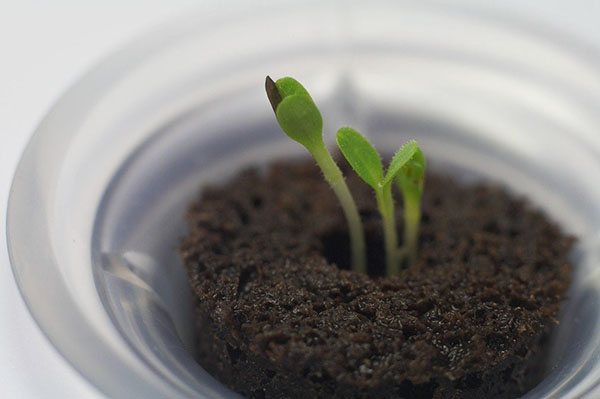

The seedlings should be looked after until spring, then planted in open ground. The cotoneaster tolerates shaded areas well. With sufficient lighting, the decorative features of the plant are fully manifested. Therefore, if possible, it is preferable to plant the cotoneaster in an open area.
The hole for planting a plant should be 50x50x50 cm in size. Drainage at the bottom 20 cm high is required so that the roots do not rot. A mixture of peat, humus and sand (all ingredients in 1 volume) and turf (2 volumes) is poured over the drainage. To neutralize the reaction of the soil, you need to mix 250 g of lime.
When planting, it is important to leave enough space between the plants: 50 cm is enough for small varieties, large varieties require about 2 meters.
Technology of growing seedlings of brilliant cotoneaster
Grow high quality and healthycotoneaster seedlings Is not a trivial task at all; the whole process from collecting seeds to obtaining seedlings takes a little over two years. In this article I will share with you my technology for growing brilliant cotoneaster seedlings. The whole process can be conventionally divided into seven main stages.
Picking the fruits of the brilliant cotoneaster
I start harvesting from August 20 and finish on August 30.
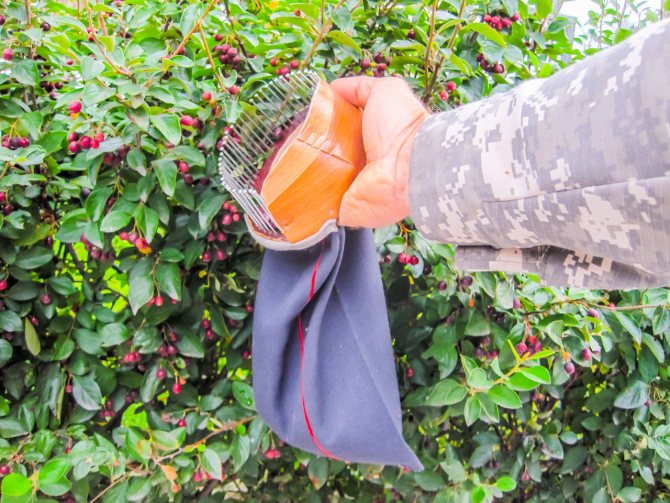

Click on the photo to enlarge.
Threshing and seed washing
I thresh and wash the seeds in mid-September.
Tools and fixtures:
- Juicer "Rossoshanka" converted for crushing and removal of pulp.
- Containers with a volume of 0.1–0.5 cubic meters. meters.
Seed stratification (preparation)
I begin stratification from October 15th after the completion of threshing and washing.
The seeds, disinfected with a 5% solution of copper sulfate, are mixed with wet river sand 1: 3 and stored in bags, indoors at a temperature not lower than + 15 ° C ° with constant humidification and stirring.
This stage of seed preparation lasts exactly one year until October 15 - the year of sowing.
Presowing seed preparation
In the year of sowing, from October 15, I carry out pre-sowing seed preparation (last year's collection) after the completion of the stratification stage for sowing.
I sift the mixture of seeds and sand and free it from the sand. I pickle and feed the seeds with microelements in a semi-dry way.
For 50 liters of seeds I use:
- 50 gr. ammonium molybdenum,
- 40 gr. zinc sulfate
- 100 ml of carbolic acid (5% solution),
- 10 ml formalin (10% solution),
- 5 liters of water.
After dressing, I dust the wet seeds with wood ash (about 5 kg).
Preparing the soil for sowing
At the end of October, I cultivate the soil to a depth of 10 cm and break up clods up to 10 mm.
Ridge markings:
- width - 1.3 m
- length - arbitrary
- paths - 0.3 m
I cut rows with a marker (17 cm between centers) and correct the grooves with a bar 8 cm wide.
In a groove 1.3 m long (across the bed) I sow 570 pcs. brilliant cotoneaster seeds (2 measuring cups with a volume of 40 ml, about 860 seeds, I spend on 3 grooves).
I plant the seeds to a depth of 1–1.5 cm with a mixture of soil and humus 1: 1.
Since November 1, I cover crops with Agril nonwoven fabric.
Seedling care
In early March, I raise the covering material by arcs of 10-15 cm above the garden bed in order to protect it from frost.
As the seedlings emerge, I perform the standard agricultural technique: breakthrough, weeding, watering, loosening the soil in the aisles, fertilizing, pest control (bear, May beetle, weevils, aphids, slugs, etc.), forming seedlings by the method of regular haircuts and etc.
Harvest
A year after sowing, I dig cotoneaster seedlings from September 25 to 30. Sorting, counting and tying bundles of 500 pieces. I accompany it by shortening and dipping the roots in a chatterbox. The length of the aerial part of the seedling is 22–25 cm.
Used tools:
- Ripper-marker
- Ripper-cultivator
- Ripper-mulcher
- Rolling clods
- Bar-bar "galley"
- Electric cultivator
- Electric juicer adapted for a fruit crusher
- Trimer - electrokosa
- Homemade shovel digger (modification of the "Kolesov Sword"
All these agricultural techniques and manipulations allow you to get the highest quality brilliant cotoneaster seedlings. Check out the availability of seedlings in the price list and call for pre-order. Acceptance of applications for seedlings begins in March.
Division of adult cotoneaster bushes
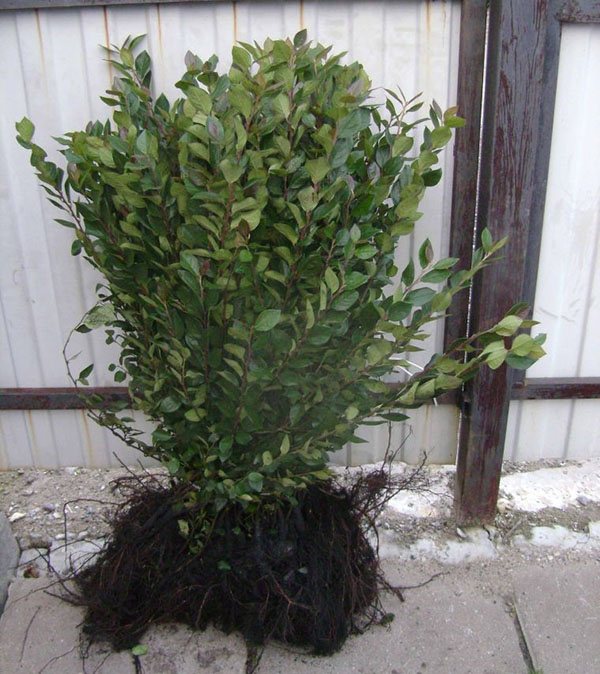

If the plant is too overgrown, it should be divided into several parts. This procedure can be carried out both in spring and in autumn. The bush is dug up, excess soil is removed, examined and divided into segments with good roots. Each of them is planted separately.
When planting, the root collar must not be buried; it must be flush with the ground.
After planting, the divided parts are watered daily for the first 3-4 weeks. Then the irrigation is reduced and carried out no more than twice every 30 days. If there is enough natural precipitation, then the culture is watered only once a month. Water consumption for each bush is 7-8 liters.
Cotoneaster hedge
Cotoneaster bushes decorate parks, gardens, personal plots, planting it in dense rows at fences, paths, curbs. It can be used to separate different zones on the site, different groups of plants, limiting flower beds or forming one of the tiers of a cascading hedge.
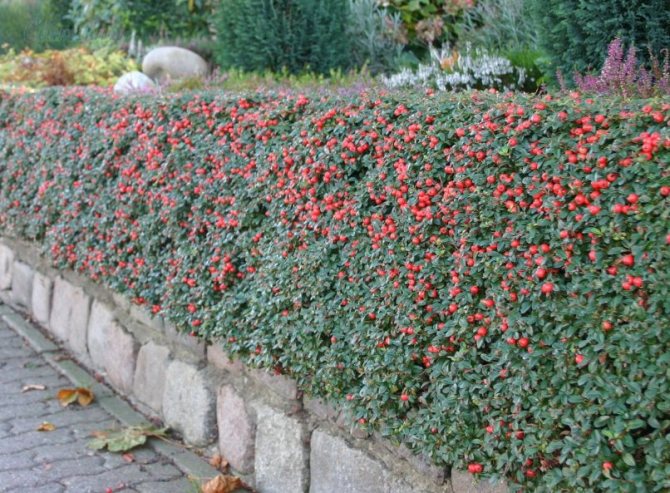

As a rule, to form a hedge from a cotoneaster, bushes are planted in one row with an interval of up to 50 cm or by a trench method with a trench depth and width of half a meter. Sometimes they also practice a two-row staggered landing. However, most often the two-row is used when planting barberry, hawthorn and other shrubs.
After planting, taking into account the recommendations described above, cotoneaster seedlings should grow on their own for about two years. And only after this period they begin to form them. The first thing to do is to limit the height of the cotoneaster by cutting off the tops of the shoots. This will give an intensive growth of side branches. When they reach approximately the size along which the formation of the contour is planned, they begin to limit their growth to the sides.
When the bush becomes thick enough, they cut it according to the outlined forms. The contours must be periodically trimmed and brought up to the conceived and trimmed. During the season, you will need to carry out about 3 - 4 such haircuts in order to maintain the desired shape. The optimum height for a cotoneaster hedge is 1.5 m.
Important! There is a huge variety of cotoneaster species, but not many are suitable for growing in the garden. For growing hedges, the most unpretentious and persistent are used: black, shiny, ordinary (whole-edged). They perfectly withstand all the vagaries of the weather, the peculiarities of the climate of the middle zone, and are also winter-hardy.
Reproduction by layering
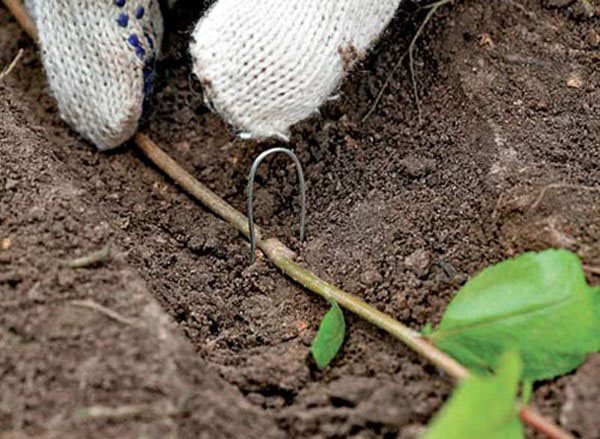

This breeding method is suitable for a ground cover cotoneaster.Branches close to the surface of the ground can take root on their own and give a new shrub. To speed up this process, young shoots are simply pressed to the ground with staples, lightly sprinkling with humus. By the spring they will give good roots. In April, each specimen can be separated from the mother plant and planted separately.
This is a very productive way with 100% results. After all, the branches while growing their roots are constantly fed from a strong mother bush.
Saplings, when propagated by layering, root well. They are quite strong and have excellent immunity to various diseases.
Regardless of the chosen method of reproduction of the shrub, do not forget about proper preparation for planting new specimens and good care for them. Young plants are sensitive to frost and require shelter for wintering.
Video about planting a cotoneaster
The cotoneaster can be not only a fruit, but also an ornamental crop. Red fruits against a background of lush green foliage will favorably set off the site if you plant a shrub as a hedge or a central figure in combination with other plants.
Pest control
The plant has good immunity to harmful insects and diseases. Shrub care involves paying attention to young shoots. Occasionally, apple aphids appear on them on the shoot and on the underside of the leaf. Leaves become wrinkled, shoots become bent and may dry out. There are also cotoneaster mites, scale insects. The shrub can infect Fusarium.
The black cotoneaster and brilliant cotoneaster, among other species, is resistant to diseases and pests. If the care of the plants is insufficient, or the planting site is chosen incorrectly, they can still get sick and be exposed to pests. Prevention of diseases: the planting site should be well ventilated and illuminated, the level of occurrence of groundwater is low, damaged shoots should be removed in time.
In case of Fusarium infection, the plant is treated with fungicides, the diseased parts of the plant are cut off and burned. Insects are fought with decoctions (garlic, yarrow, makhorka), or artificial preparations.
Reproduction of cotoneaster by cuttings
Culture propagation is carried out in several ways, depending on the type of shrub. But before planting a bush in your area, find a suitable place for it and prepare the soil. It is advisable to choose a place that is illuminated, but light partial shade will not be an obstacle either. The soil for the cotoneaster should be nutritious, non-acidic and well-drained.
For propagation by lignified cuttings, shoots are cut in the fall and stored in the refrigerator until spring. Planting lignified cuttings in spring does not differ from the same procedure with green cuttings. The tip of the shoot must be dipped in a root formation stimulator and planted in a prepared hole. Cuttings will take root by autumn.
Cotoneaster in winter
Cotoneaster in the fall (preparation for winter)
Almost all cotoneaster are cold-resistant and winter well without shelter, it is enough to mulch the soil around the bush with peat, but if you are afraid that your cotoneaster will freeze, bend it to the ground, fix it in this position and throw dry foliage.
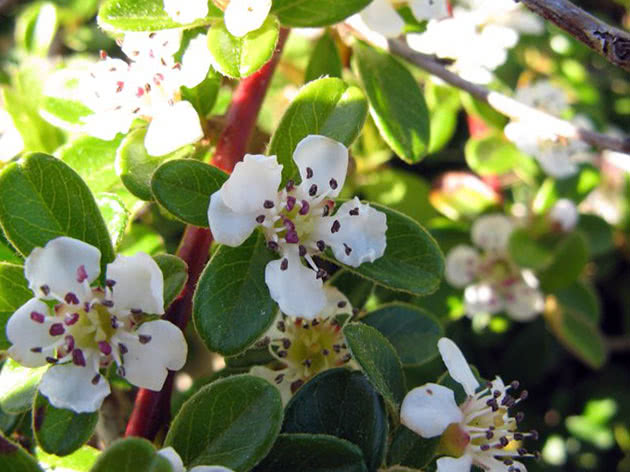

Wintering cotoneaster
In the event that the winter is too frosty and snowless, you can additionally cover the plant with spruce branches or covering material, but if it starts snowing, remove the shelter and let your bush winter under a layer of snow. Black cotoneaster, whole-edged and shiny cotoneaster, which are most often grown in our climate, have high winter hardiness and even withstand significant frosts without shelter.
Vaccination is a simple but effective way to propagate a cotoneaster
The grafting method is used for varietal types of cotoneaster. A well-developed young shoot of a wild-growing cotoneaster is taken as a stock.The budding procedure is performed in the morning, when the plant is saturated with moisture, the dates are late August - early September. The scheme is as follows: a cut rootstock bud with a petiole is inserted into a T-shaped incision on the bark of the scion. In the spring, before the beginning of the growing season, the upper part of the rootstock above the bud is cut off. The bud will give life to a young shoot, which by autumn can grow up to one and a half meters.
What a plant cotoneaster
Among the most famous species: common cotoneaster, horizontal, shiny, black-fruited, whole-edged, dammer cotoneaster and others. In addition to its decorative and functional qualities, the plant has medicinal properties and is used in the treatment of many diseases.
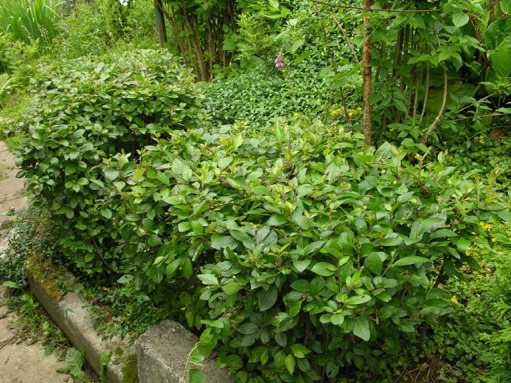

Cotoneaster bush
The shrub is not thorny, evergreen or deciduous. There are many types of plants that decorate, singly or in groups, urban and backyard landscapes, as well as perform the function of a fence - a living wall - in parks, squares, dachas. The cotoneaster pleases with beautiful foliage, in spring - with gentle flowering, and then - with edible fruits.
How to propagate a cotoneaster by layering
For a cotoneaster ground cover type, propagation by layering is ideal. In such plants, shoots spreading above the ground can reproduce independently. To streamline and speed up the process, select the shoots of the current year and use metal staples to attach to the surface. Sprinkle humus on top. In the spring, the rooting site is carefully dug out, the branch is separated from the donor bush and transplanted to a permanent place. This method is considered one of the best: the shoot, while rooting, receives the necessary nutrition from the donor thanks to an adult, well-developed root system. At the time of transplanting, you have a strong and healthy seedling.
Choosing the time and place for planting cotoneaster, soil preparation
Gardeners are divided as to which time is best for planting, fall or spring. Some advise planting the bushes as soon as a stable above-zero temperature is established, while others recommend postponing it until the fall, and placing the cotoneaster in the ground at the end of the leaf fall.
The cotoneaster loves open and sunny areas.
Despite the fact that the culture is very uncharitable and undemanding to the composition of the soil, it is better to choose open meadows or partial shade. However, with proper care, the cotoneaster will grow beautifully, planted along a high fence. In this case, its leaves will remain bright green, while in the sun they may fade a little.
It is better to choose the soil in sandy, and then in the autumn the leaves will change their shade from green to purple or orange. The fact is that in other soil, for example, with a high content of clay, there are not enough trace elements that contribute to a change in color.
Since the cotoneaster does not tolerate waterlogging and stagnant water, it is better not to choose areas with abundant groundwater and, if necessary, provide good drainage.
Before planting a cotoneaster for a hedge, you will need to dig the selected area about two shovel bayonets deep. Then the soil is mixed with peat and sand, and rotted manure is also added.
It is better to prepare the site for the cotoneaster in advance. If you plan to plant a crop in the spring, this should be done in the fall, and in cases where the seedlings are placed in the ground before the onset of cold weather, it is worth preparing the territory in March or early April. And before proceeding directly to planting, the soil will need to be loosened and leveled again.
Learn how to properly plant a barberry hedge.
Read about planting a bladder hedge.
Division of adult cotoneaster bushes
Strongly overgrown adult cotoneaster bushes can be planted by dividing into bushes. The cotoneaster bush is divided both in spring and autumn. The plant is carefully dug up, cleaned of adhering earth.The root system is examined and divided into several parts so that each bush has strong root shafts. The resulting delenki are planted in a prepared place.
In the first month of planting, the delenki are watered every day. Then watering is gradually reduced to twice a month. If the season is rainy, watering is carried out once a month. About eight liters of water is poured under the bush.
Content
- Listen to the article
- Description
- Planting a cotoneaster When to plant
- How to plant
- How to care
- How to propagate
- Preparing for winter
Sowing cotoneaster seeds
The cotoneaster is a fruiting shrub, and its seeds may well produce offspring. The problem is that seed germination is very low, and it grows slowly. A seed planted in a medium-sized seedling grows in four years. Therefore, the seed method is used to breed new varieties. If you still decide, follow these instructions:
- The berries need to be dried so that the pulp easily comes off;
- After removing the pulp, rinse the seeds well;
- You can reject unpromising seeds as follows: lower them into a container of water and wait until the seeds sink to the bottom. Those that come up are thrown away.
- Selected seeds are sent for annual stratification in wet sand. The temperature is maintained at 30 ° C for two months, then gradually reduced to -5 ° C.
Germinated and ready to sowing seeds are sown next year in the fall to a depth of 3 - 5 cm.
The brilliant cotoneaster is one of the popular shrubs that is widely used in landscape design to create a hedge. It has a beautiful decorative appearance, and is also unpretentious in maintenance, so its reproduction is quite easy.
How to properly prune a cotoneaster
Cotoneaster pruning is carried out in early spring, but what exactly it will be depends on the type of shrub and on your goals. Pruning can be sanitary, anti-aging and molded. The last two are done only in the spring, before the kidneys open, and the first - at any time.
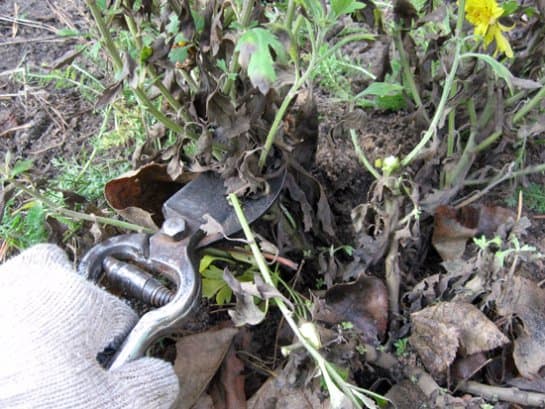

Sanitary pruning
Sanitary pruning is recommended as needed at any time of the year. Dried, broken, damaged, diseased or just old shoots are subject to removal. It is done in order to improve the health of the shrub and preserve its attractive appearance.
Important! Little knowledgeable people and novice growers confuse dogwood and cotoneaster, taking them for the same shrub. But consonance is the only thing that brings them together. In fact, they even belong to different families. The cotoneaster has inedible berries that look like mini apples. It, unlike dogwood, is grown not for the sake of its fruit, but for its decorative effect, which it retains for many years of its life.
Anti-aging pruning
Over time, the lower tier of the cotoneaster becomes bare, especially when it comes to the black-fruited variety, and the bush requires rejuvenating pruning. Also, a signal for this kind of manipulation is a plant growth of no more than 7 cm per year.
It is carried out, as already mentioned, in the spring, when the buds have not yet blossomed. Depending on the region, it can start from February to April. Sometimes it is held closer to autumn - in August-September.
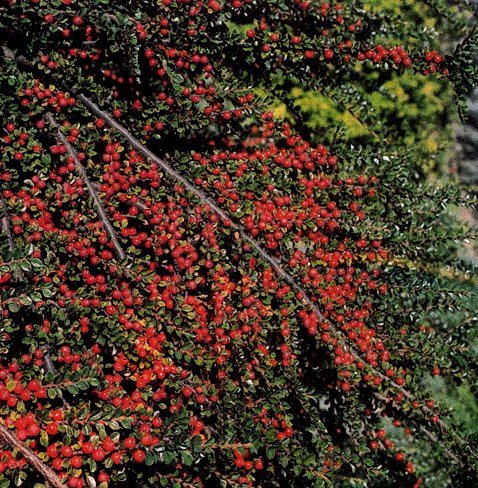

Anti-aging pruning involves shortening the shoots from the top by about a third. As a rule, three to four buds are cut, and the cut itself is made over well-developed buds. This stimulates lateral buds or accessory buds to grow.
To avoid thickening of the plant, it is practiced to remove the oldest branches once every two years. Then the new ones bloom more abundantly. The signal for this kind of pruning is the shredding of the flowers of the bush.
Formative pruning
When the plant reaches about two years of age and the shoots are 60 cm long, formative pruning of the plant can be carried out. Landscape designers love it for the fact that it can be given a wide variety of shapes: hemisphere, prism, cone, or more complex outlines.
When curly pruning, the top is first pinched so that the lateral shoots grow, and the next year you can cut the shoots by a third, giving them the desired shape. It is recommended to first try simple shapes and only after acquiring the necessary skills to move on to complex shapes. The choice of specific outlines is also influenced by the cotoneaster planting scheme, so think over the options for the outlines of the bush in advance.
Brilliant cotoneaster - description
Cotoneaster is a brilliant homeland from Eastern Siberia, where it grows mainly in the wild in thickets of other shrubs and among the undergrowth of the coniferous forest strip. In cultivated form, it found wide distribution only at the beginning of the 19th century, and gained great popularity due to its unpretentiousness and ease of cultivation.
Today it is mainly used to form hedges. Due to its shape and beautiful appearance, it can be used as part of decorative compositions in a backyard or summer cottage.
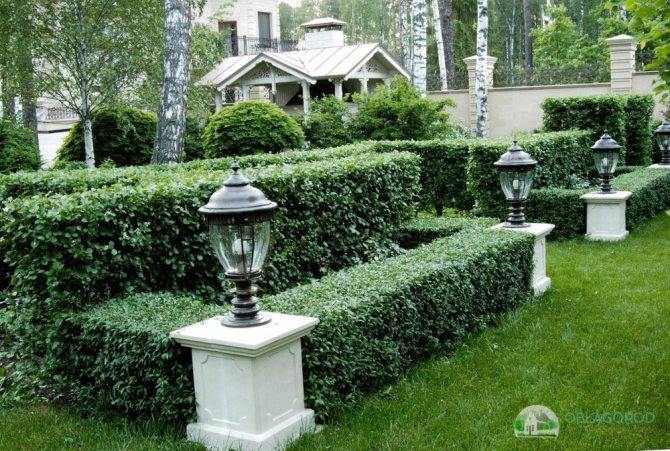

The cotoneaster is used to form hedges
It has a magnificent lush crown and small glossy rich green leaves, and black berries appear on the shoots during fruiting. They remain on them and do not crumble until late autumn, which makes them even more decorative and simplifies plant care.
The cotoneaster of this species grows in China mainly on rocky slopes, in mixed deciduous-coniferous forests, as well as on pebble rivers. With proper care, it can reach a height of 3 meters, while the crown can be 1.5 times greater in diameter than the height. Straight shoots of the shrub are characterized by an average growth.
It blooms in late spring and early summer, which lasts for a month. The entire crown at this time is covered with small pink flowers, which almost completely cover the foliage. In autumn, cotoneaster leaves change their color from green to brown-red, which further adorns the garden.
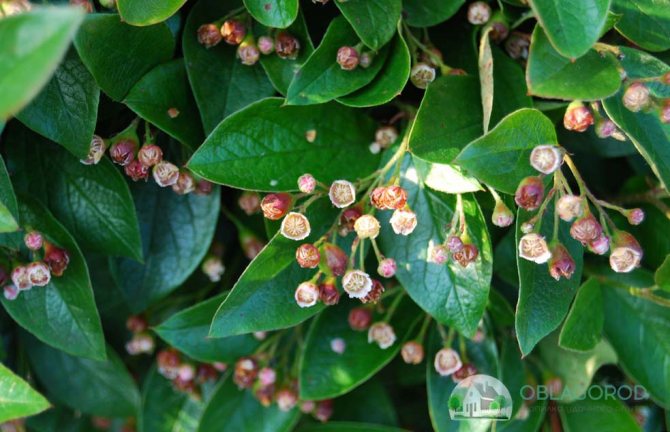

Flowering cotoneaster
The shrub begins to bear fruit only in the fourth year after planting. In addition to its decorative function, the cotoneaster also has a medicinal effect. It can be used to treat various diseases, therefore it is widespread among summer residents.
Cutting the cotoneaster
Cotoneaster hedges need proper pruning. The bush can be given various shapes, but the square and trapezoid are considered classics. Dogwood grows quickly enough and, accordingly, protruding branches will noticeably spoil the aesthetics of the plant. In this regard, pruning of unnecessary branches is done often. The exact shape of the hedge depends on the gardener's design, but not all shapes are suitable for shaded areas.
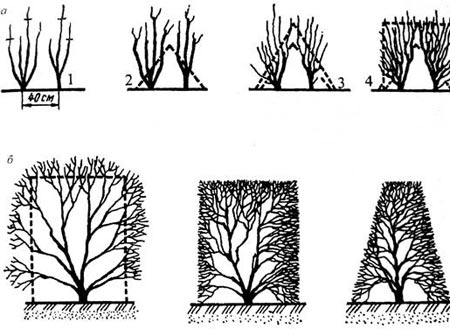

Variants and forms of hedge trimming
If the area is open and enough sun penetrates it, then the cotoneaster can be trimmed in a square or rectangular shape. Some use their skills and give it a rounded or elliptical shape. But if the area is shaded, then the most optimal haircut will be the shape of the trapezoid.
Such a haircut promotes an even hit of sunlight on the cotoneaster, without depriving the lower parts of the hedge. Complex haircuts are used for a bright decorative effect. Mainly for perennial plants, the age of which reaches 5 - 7 years. With a cotoneaster height up to two meters, it is figuratively divided into two parts. The lower part is cut out with a square, and balls are formed from the upper part.
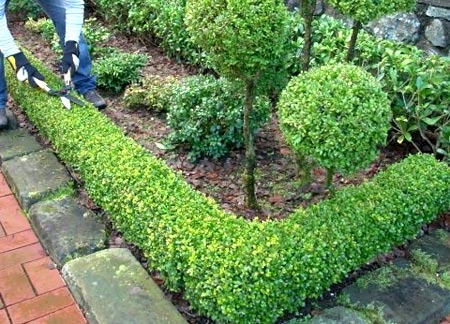

Such a haircut gives an amazing effect and does not need any addition. Note: Improperly molded hedges in shaded areas can lead to uneven growth, which will affect the appearance of the shrub.
The cotoneaster hedge should be pruned in early spring or late autumn, as it can collect harmful aphids and other parasites on its branches.
In case of severe frosts, the shrub can be insulated and, if necessary, sprinkled with foliage. A hedge made from a brilliant cotoneaster retains the shape of the haircut for a long time, but if necessary, it must be refined.
Reproduction methods
The cultivated brilliant cotoneaster can reproduce in different ways:
- cuttings;
- layering children;
- seeds;
- dividing the bush.
Each method of reproduction has its own advantages and characteristics, but among inexperienced gardeners and experienced agronomists, the first is most common - cuttings. To form a hedge, you can buy 1 or 2 shrub seedlings, and then plant them in the desired place.
In the second year, you will need to prune them, which will give the bush a beautiful decorative shape. During the cutting process, a large number of twigs will appear, which can be used as a good planting material. This will save you a significant amount of money.
In this case, there are two options for grafting:
- green shoots;
- woody twigs.
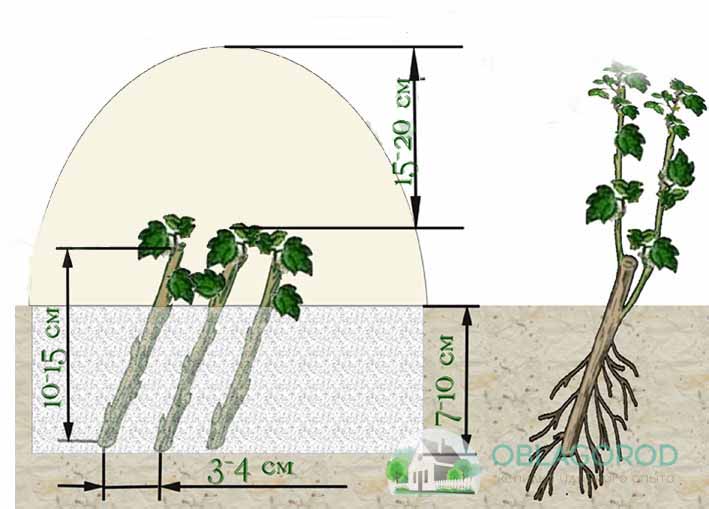

Reproduction by green cuttings is easy to implement and not time consuming. It involves the following actions:
- Only well-bending shoots and twigs are suitable for cuttings, if they are already stiff or very soft, then they cannot be used for this propagation method. Cuttings should be no more than 10-15 cm long and have at least two internodes.
- Cut twigs and shoots should be immersed in a special liquid for a day to stimulate root growth. To do this, they can be treated with a 0.005% solution of the IMC preparation. Another suitable stimulant is heteroauxin, which must be diluted in proportions of 1 tablet to 1 bucket of water.
- For planting, a hole is being prepared, which needs to be additionally fed and fertilized. The stalk should be placed in the ground at an angle of 45 degrees and to a depth of no more than 5 cm. The soil should be loosened beforehand and sand and peat should be added to it.
- After transplanting, the seedling is watered with warm water and covered with a regular plastic water bottle. To do this, you must first cut off the bottom of the bottle. On hot days, the lid must be unscrewed, and watering must also be carried out through it. Another planting option is box planting and placement in a greenhouse or greenhouse.
The most favorable time for the selection of seedlings for cuttings is the beginning of summer - June. In a warm climate, by this month they gain strength, acquire the ability to quickly adapt to the subsequent transplant. Reproduction and planting of seedlings in the middle of summer allows for good rooting, which will allow them to take root in a permanent place.
Reproduction in this way is quite easy to carry out, but the rooting rate of the planting material is from 30 to 95 percent. After rooting, green cuttings get used to the air, so they are subsequently transplanted into open ground.
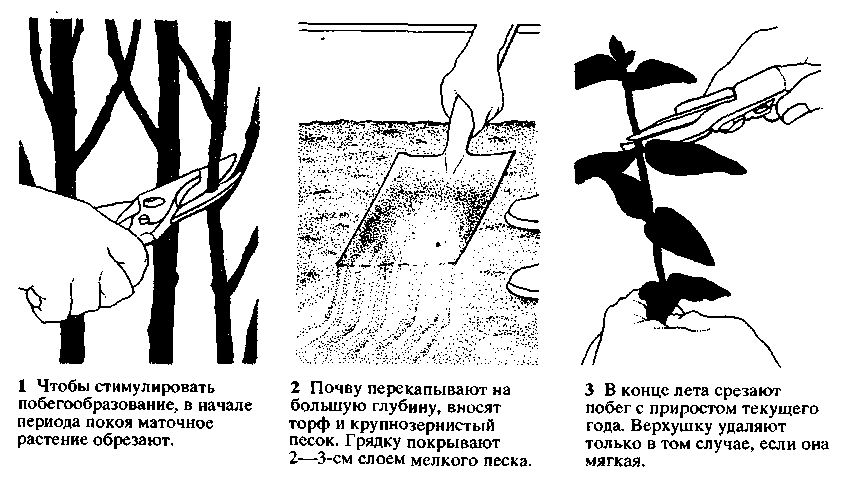

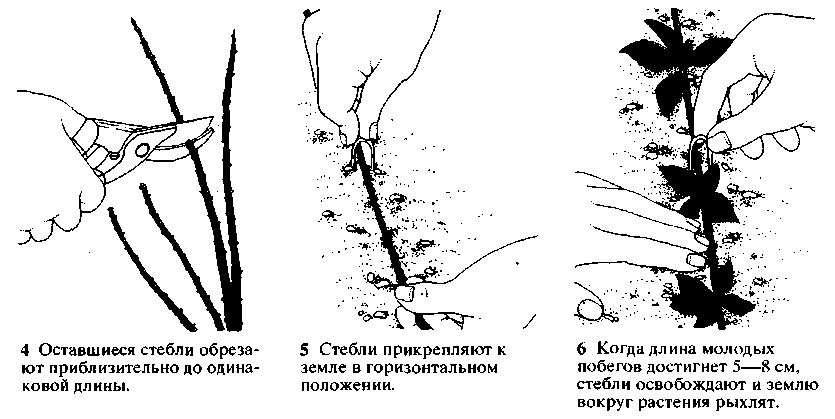

Layering instructions
All the subtleties of planting a cotoneaster
Regardless of the type, the cotoneaster is transplanted in the spring. It is necessary to have time to do this before the buds have blossomed, but only after the earth has thawed. However, the black and shiny cotoneaster can also be planted in the fall. Again, you need to be in time before frost, but planting should not be done before all the foliage has fallen off.
When choosing a place for a shrub, select sunny areas on which it will acquire all its decorative effect.Although in partial shade, he also grows quite beautiful. It is important that there are no strong winds in this place, and the groundwater goes deep enough.
The cotoneaster is unpretentious to the soil, but for confidence during planting, you can apply the necessary fertilizers directly to the hole.
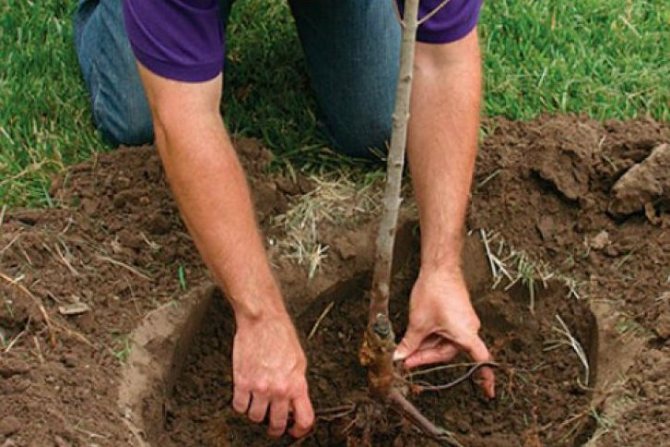

The holes are prepared about 50x50x50 cm in size. In this case, the bottom layer of the pit, about 20 cm, should consist of drainage: broken brick and gravel. From above, the bush is sprinkled not with ordinary soil, but with a mixture of two parts of sod land and one each of humus, sand and peat. It is desirable that the soil itself for the cotoneaster be like this.. Experienced gardeners recommend adding about 200 g of lime per square meter to it.
Keep in mind that the bush will grow and form a lush crown, so the distance between it and other plants must be kept at least half a meter, or better than two. When sprinkling the seedling with earth, care must be taken not to close its neck, which should be clearly level with the ground. The soil itself around it must be well tamped, watered and mulched 8 cm with peat.
Important! When planting a cotoneaster for a hedge, prepare not holes for it, but trenches.
Whatever type of cotoneaster you planted, it will take root with almost 100% probability without any problems.
Planting and growing
Reproduction by bush cuttings involves transplanting them after strengthening and forming a viable planting material. After planting, a full-fledged root system develops only by the autumn period. Despite the fact that the shrub is frost-resistant, after transplanting into open ground in the first winter, it requires insulation.
The brilliant cotoneaster is not picky about the composition and fertility of the soil. But to ensure good growth, a planting pit filled with substrate should be prepared. To prepare it, you need to mix turf, peat and coarse sand in a ratio of 2: 1: 2. At the bottom of the pit, it is advisable to pre-fill a layer of broken brick or gravel, which will act as a drainage to remove moisture.
The cotoneaster is quite resistant to various diseases, but in order to prevent their possible appearance, when choosing a place of constant growth, you should stop at lighted and well-ventilated ones. They should be illuminated by the sun throughout the day, and the groundwater should be low enough. At the same time, the cotoneaster, like other ornamental shrubs, must be regularly cleaned of dust and not overfeed with fertilizers with a high nitrogen content (especially in the middle of summer).
Diseases and pests of the cotoneaster
Speaking about diseases of the cotoneaster and damage to the plant by harmful insects, it is worth noting the high immunity of the plant to diseases, but occasionally aphids, spider mites or scale insects can be seen on the bush. Cotoneaster leaves shriveled, and young shoots withered? This is what the plant looks like after the invasion of aphids. It is worth fighting pests with the help of special systemic drugs.
Spider mite infestation is easy to identify by the appearance of the thinnest cobweb on the back of the leaves, but the appearance of a cobweb indicates a significant degree of infection. The mite is activated during extreme heat, in dry air, so it is useful to spray the plants with water more often on the leaves. To get rid of a spider mite will help such drugs as: "Fitoverm"; Actellik; "Neoron".
Advice! When treating plants from pests, it is important to observe the dosage indicated by the manufacturer in the instructions for use.
After flowering is complete, a moth can attack the cotoneaster, this pest can greatly reduce fruit formation. It is necessary to carry out moth treatment as soon as the pest has been detected. They do the job well karbofos or rogor. The treatment is repeated 2 to 3 times with an interval between sprays of 2 weeks.
More often than other infections, cotoneaster bushes are affected by Fusarium, a fungal disease that quickly spreads through a healthy plant, causing rapid wilting and complete death. Treatment - treatment with fungicides, sore spots should be previously cut out to healthy tissue.
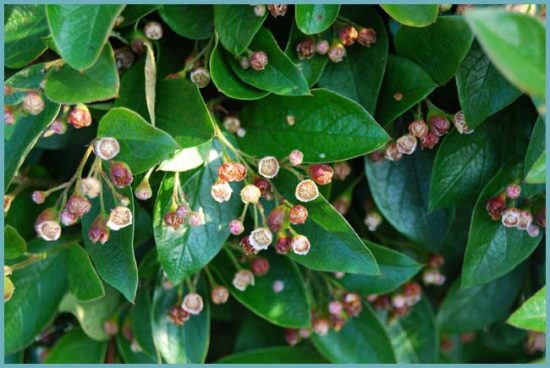

Flowering cotoneaster
Caring for the cotoneaster after planting
The brilliant cotoneaster has gained great popularity due to its lush crown and unique decorative characteristics. It grows well in sunlit areas, but can take root and bear fruit in shaded areas. The plant is practically not demanding on care, soil fertility and watering, so its reproduction and cultivation does not cause trouble.
An ornamental shrub of any kind and type easily tolerates a lack of moisture in the soil and is highly resistant to dust. That is why it can withstand any adverse conditions well and can grow in urban environments. To ensure its good growth, it is important to follow the basic rules of care:
- Adult crops should be watered very rarely, even in hot summers this should be done no more than several times per season. It is unacceptable to allow waterlogging, since the cotoneaster belongs to drought-resistant crops, it can die if there is an excess of water in the soil.
- For aesthetic and hygienic purposes, the leaves of the bush should be regularly cleaned of dust. This is especially recommended if it acts as a hedge in a garden or personal plot.
- The culture is frost-resistant, therefore it is able to withstand even a prolonged drop in temperature and sudden changes. That is why the shrubs survive the winter well and do not freeze out even in the harsh Russian climatic conditions. They do not require shelter even in the absence of snow in winter, but for safety reasons, the base of the bush can be sprinkled in late autumn with a mixture of peat and dry foliage. To protect the branches from the cold, they can be bent to the ground.
- During springtime, the cotoneaster needs to be fed to ensure an abundant crown and good growth during the summer season. For this, fertilizers with a nitrogen content are suitable, and before flowering (in mid-May), fertilizers with phosphorus and potassium in the composition must be applied under the bush.
- The shrub must be trimmed regularly throughout the year to form a beautiful crown. Pruning not only gives it a more attractive appearance, but also makes it compact, dense and lush. When clipping, all shoots and twigs are cut by one third.
Only by observing the basic rules and recommendations can the desired result be achieved - a beautiful lush crown, stimulating growth, abundant fruiting.
Cotoneaster varieties
In order to organize the proper care of the cotoneaster, as well as choose the optimal breeding method, you should familiarize yourself with its types. Of the most famous varieties, one can distinguish:
- Ordinary. Grows in the form of a low shrub. The crown shape is round and quite dense.
- Multi-flowered. Reaches a height of up to 2 meters. Its branches are very delicate and refined, abundant flowering.
- Pressed. A very low plant, rarely more than 30 centimeters high. It grows and develops slowly, and in winter it requires careful shelter.
- Black-fruited and red-fruited. In appearance they are very similar to each other. But from the name it is clear that their difference is in the color of the berries. This variety is unpretentious to growing conditions, perfectly tolerates cold winters and hot summers. Loves warm and sunny weather. It grows well in gas-polluted cities.
- Horizontal shiny. This variety is the most popular. It can stretch up to 2 meters up. It has dark green foliage, which shimmers in various tones in autumn, from yellow to deep burgundy. Looks great both independently and in a group planting.Does not require special attention to itself, not whimsical, tolerates various weather conditions without problems. The haircut is painless.
Which variety to plant on your site is an individual decision.
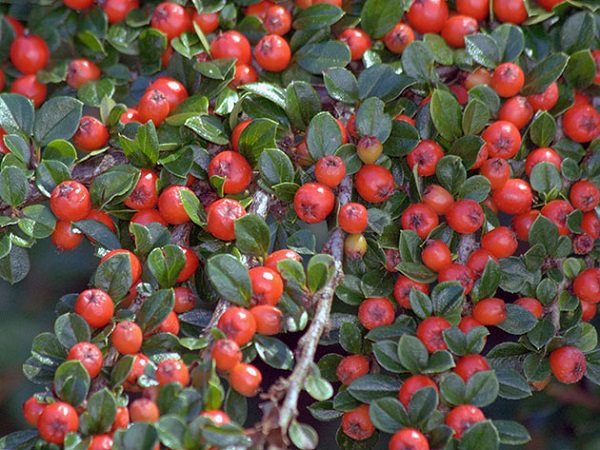

Cotoneaster formation
The best shape for forming a cotoneaster is trapezoidal, when the base is wider than the top. This will allow the plant to develop evenly and correctly, each section of it will receive a sufficient amount of sunlight.
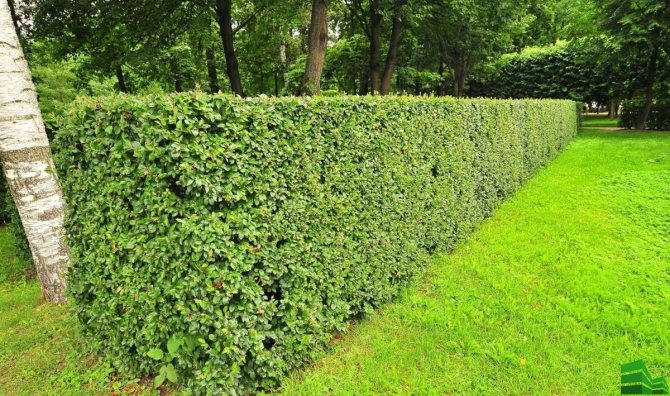

The plant should be pruned 6 to 8 centimeters annually. The procedure is carried out until the shrub reaches the desired height. You don't have to put much effort in forming a cotoneaster; a novice gardener is able to do it quickly and accurately. When performing work, you will need garden shears and a template - the desired future shape. It is made of wooden blocks connected with a rope.
The most popular form for a cotoneaster is tall, in a row columns. For this, the plant is allowed to run on solid supports. Do not be afraid to prune the plant inaccurately. Rapid growth leaves gardeners the opportunity to correct inaccuracies the next time they adjust the shape.
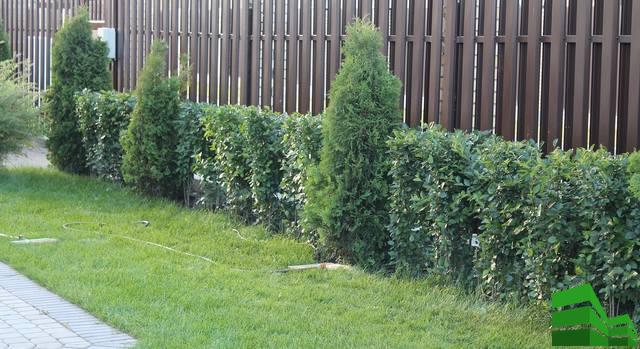

A hedge made with the use of this shrub is capable of renewing any adjoining space, making it unique, inimitable.
General characteristics of the variety
The cotoneaster belongs to the pink family. Among its representatives there are both shrubs and low trees. Brilliant cotoneaster (C. lucidus Schlecht) is native to Eastern Siberia, found in the wild in Transbaikalia, in Altai. There it is listed in the Red Book and is a protected plant. There are bushes in Central Asia and in the Chinese province of Gansu. The species has been introduced into culture since the beginning of the 19th century and is found everywhere.
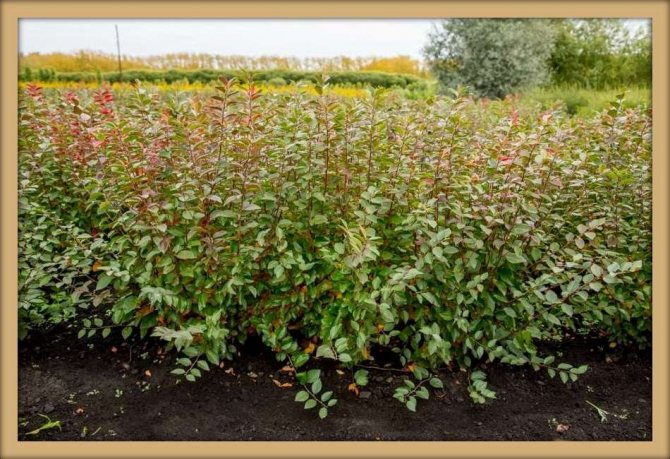

The brilliant cotoneaster fully justifies its name: dark green, lighter on the inside, leaves up to 5 cm long shine in the sun, as well as berries that appear on the bushes in the fourth year of life. This short, deciduous shrub, depending on the region, grows from 2 to 3 m. In youth, the shoots are straight. Over time, the bush takes on a prostrate shape - the diameter becomes almost 1.5 times the height. Good leafy crown at any age. The plant has three decorative peaks:
- In May, for a whole month, it is covered with loose shields of inflorescences, each of which has from 3 to 8 pink small flowers.
- It is no less beautiful in September, when the black inedible fruit-balls ripen, which can not crumble until the very frost.
- The bush is especially good in late September - early October, when the foliage turns bright purple.
The reddish-brown branches contrast with the white snow in winter and enliven the landscape. The plant belongs to mesotrophs - not too demanding on nutrition, mesophytes - calmly tolerates a lack of moisture, microtherms - it exists well in conditions of a short cool summer and a frosty snowy winter.
Pros and cons
Today botany is represented by a variety of plants. There are approximately eighty varieties of cotoneaster. Not all of them are able to adapt to the climate of the region where they were planted. For example, a shrub shrub is the best choice for a living enclosure as it is very undemanding.
Landing is not a difficult process - the amount of sun is almost unimportant to it. He prefers warmth, but does not resist shading areas. And here is what a fast-growing hedge looks like and how it is made, you can see here.
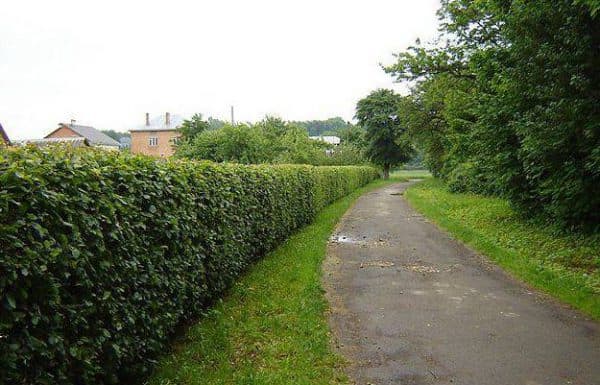

It looks like a hedge cotoneaster shiny
But it is necessary to have an idea of the beneficial effect of sunlight on the plant, for this reason, experienced gardeners advise to plant the bushes in the clear side.
Usually the shrub reaches a height of two meters (5 years after planting). Berries on the bush itself are stored until the first frost. The main advantage of the cotoneaster is considered to be unpretentiousness to the soil in which it lives.
You may also find it helpful to learn about what a hawthorn hedge looks like.
The video shows a description of the cotoneaster fence:
The advantages of this shrub have been appreciated by many gardeners:
- Appearance... The elegance and richness of the hedge from the brilliant cotoneaster is an important advantage. But what looks like and how to make a willow hedge can be seen here.
Young cotoneaster bush brilliant - Growth circumstances... The plant takes root in various bases, is not afraid of drought, excess moisture, is resistant to cold weather and whirlwinds.
- The bush is well adapted to the strict climate conditions, not afraid of shade, grows in rocky and meager bases, while maintaining the highest decorating features.
- Service Features... The plant adapts well to any territory, the shrub is undemanding to care, watering and feeding. An exceptional aspect is the need for a constant cut of branches. Only under the circumstance of regular haircuts will a living fence delight with impeccable configuration and grooming.
- Diseases and pests... In advance, in the spring with a preventive purpose, the plant is treated with insecticides. The plant is exposed to fungal diseases, the required measures are the treatment of bushes and soil with fungicides, urgent pruning and burning of affected branches.
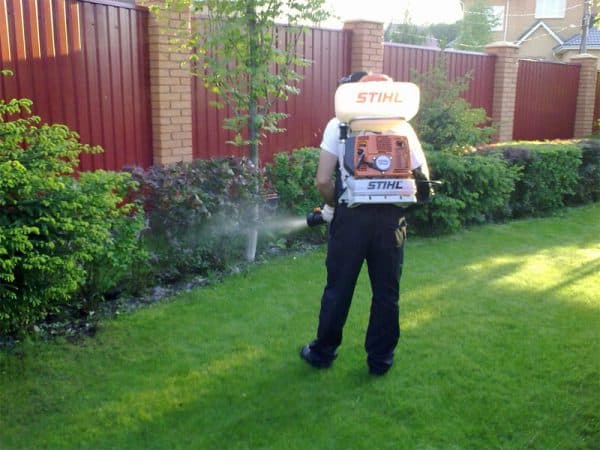

Hedge bush pest treatment cotoneaster brilliant
To form the correct shape of the bush, you must:
- Plant young plants with a distance of about 50 cm between the pits.
- The bushes are planted in two beds (checkerboard pattern).
- In order to form the density of the living fence, the plant should be periodically cut.
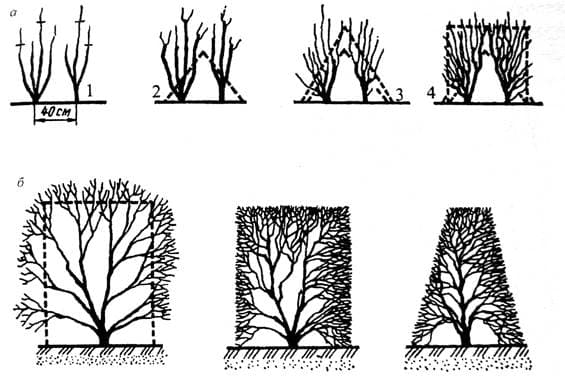

- The formation of the fence is of significant importance.
- In 1 year of planting, the bushes require massive pruning.
- The next year, a similar haircut is performed to eliminate small stalks.
- When, after 2 years of pruning shrubs as a living fence, it was not possible to achieve the density of the lower part, then a full trimming is carried out again for 3 years.
- Then, any further year, a live fence will only require a cosmetic haircut.
But a brilliant cotoneaster, unlike ordinary spruce, has only one drawback - its branches should be cut very often, otherwise attractiveness is lost.
But what fast-growing shrubs for hedges are and what they look like can be seen here.
Cotoneaster brilliant in landscape design: photo
How to trim a hedge
With the rapid growth of cotoneaster bushes, timely pruning should be provided to maintain the correct shape of the hedge. Decide immediately when to cut the cotoneaster. Usually this process is done after the start of rapid growth.
Cutting a cotoneaster with a closed root system can be done immediately after planting: this will allow it to become even more luxuriant over time.
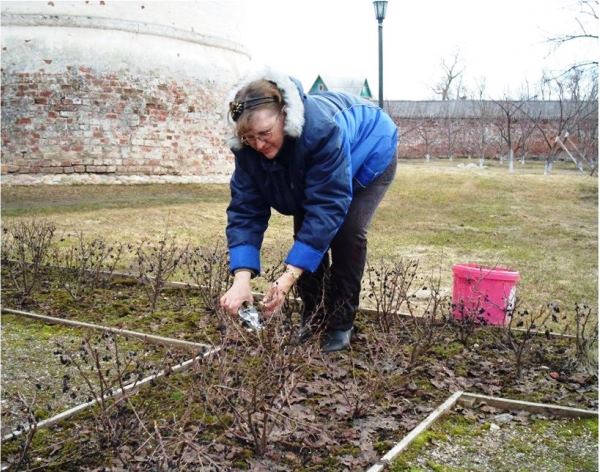

Follow these guidelines for pruning a shiny cotoneaster:
- young branches are allowed to be cut only by a third of their size;
- a newly planted cotoneaster can weaken if pruned during the winter season;
- such plants should be trimmed twice or three times during the season;
- make the top of the cotoneaster about ten to fifteen centimeters narrower than the lower part, so that it has a trapezoidal shape. So the lower levels of the plant will grow better, since they will not be too shaded;
- Increase the cutting height by about five to seven centimeters annually until the plant reaches the height you need for your fence.
The best way is to trim a shiny cotoneaster with a ball.This is done using special frame templates that can be made with your own hands on the basis of wooden beams and a stretched rope. Use a hedge trimmer or trellis shears for pruning.
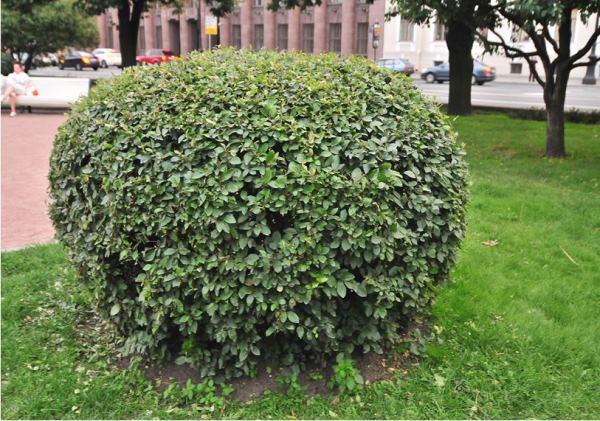

A row of tall columns can be made from this plant. Place two two-meter supports in the center of the column - and braid side branches around these poles. Use a garden hose to connect the poles to keep the metal out of contact with the bushes.
Even if you make a mistake when cutting, the branches of the cotoneaster will grow back - and you can continue the experiment. As a last resort, contact a specialist who will do this work accurately and quickly.
Hedge placement options
When planning the creation of a hedge from a cotoneaster, you should consider the conditions under which it will grow. We recommend planting these shrubs in semi-shaded areas along the fences. So the cotoneaster leaves will not undergo burnout processes and will attract attention with their natural brilliance.
As for the soil, its choice depends on how important the appearance of the hedge is to you. Despite the fact that the cotoneaster can grow in different conditions, leaves with an orange and green tint with the onset of autumn are possible only if they grow on sandy soil, since the clay type soil lacks trace elements that contribute to the color change of the plant.
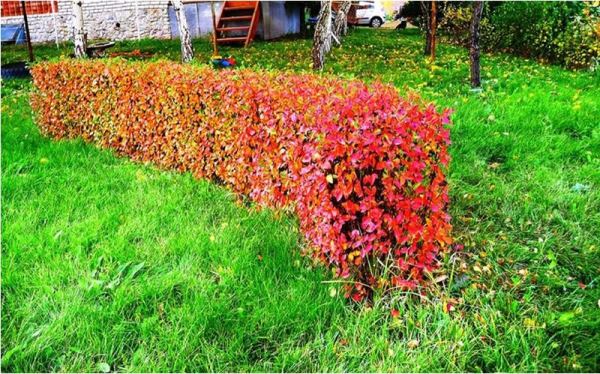

Cotoneaster brilliant in landscape design, photo
Cotoneaster - the benefits of a bush
The cotoneaster goes well with any landscape design solution, suitable for decorating small areas or a whole hedge, wall. Wild flowers or fruit crops can be planted near such a plantation.
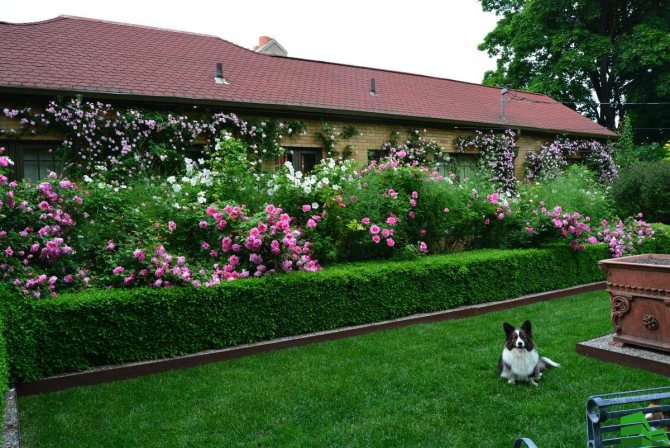

As a shrub, cotoneaster has a number of advantages that attract gardeners to use it for decorative purposes. These include:
- dense foliage of saturated color is the main aesthetic characteristic, since some varieties are able to preserve it in winter frosty time. For this he is appreciated by gardeners around the world;
- simplicity of planting and care, the plant easily adapts to environmental conditions, soil, exists well with other plants. It is able to grow in drought or high humidity conditions, on poor soils, without requiring bait and fertilizers;
- able to grow both in the shade and on the sunny side, while maintaining aesthetic qualities;
- has resistance to insect pests, diseases. But for the purpose of prevention, it is recommended to treat the bushes with an insecticide agent before flowering.
That is why the cotoneaster is used in the improvement of the local area, the construction of a hedge. The only difficulty arising in the cultivation process is the complexity of reproduction, it is required to prepare the seedlings with special care and plant it under certain conditions. In addition, the branches need to be trimmed regularly to maintain the desired hedge shape.
Types of cotoneaster
There are about 80 types of cotoneaster. Many of them grow well in the southern regions, only a few take root well in the northern regions. For a hedge, the best options are a shiny, black-fruited or horizontal cotoneaster.
Cotoneaster brilliant Is a deciduous shrub. Can be grown both in the sun and in the shade. In a sunny area it grows much better, denser, and without the sun it will never please with brightness. The shrub reaches two meters in height. In autumn, it is notable for its red fruits and leaves, which stand out against the background of other plants. Berries appear only 4-5 years after planting. The berries are on the branches before the onset of the first frost.
Horizontal cotoneaster Is a short, but evergreen shrub. It is no more than 50 cm in height. In spring, it blooms with pink flowers with a dark tint.At the beginning of autumn, fruits appear on it, which can sag until winter, and sometimes until next year, which gives the hedge a fabulous look. The plant should not be planted in regions subject to severe frosts.
Black cotoneaster grows well both on estates and in nature. Blooms in late spring, flowers are quite fragrant. In autumn, black fruits are formed with an unusual, bluish coating. This species does not need particularly fertile soil, tolerates arid or cold climates. A hedge from it can be created in almost any area.
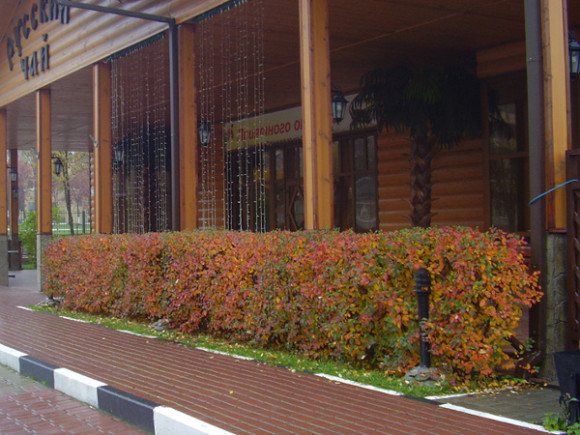

Shrubs for hedges. You will read about this in our next article. And this article tells about the forsythia shrub.
Care
And its slow growth will allow pruning only 2-3 times a year. In autumn, it is painted in many bright colors, and closer to winter, the leaves fall off.
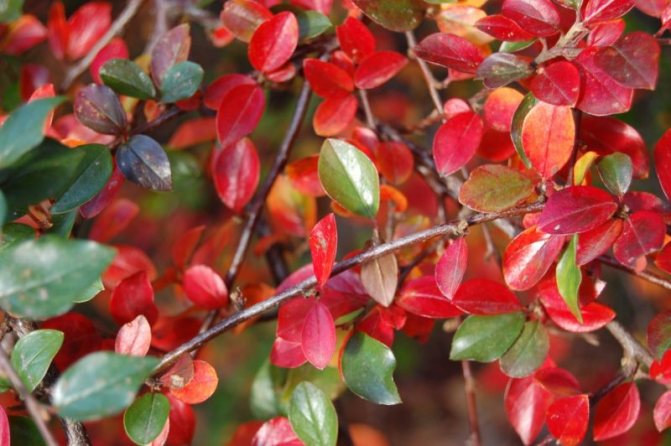

The brilliant cotoneaster blooms during May-June, bears fruit in September. Its growth can reach 2 meters, and in 2-3 years it will reach a height of 60 centimeters, a height at which it is possible to carry out curly molding of bushes. The cotoneaster lends itself incredibly well to shaping and shaping. Balls, trapezoids, triangles and even complex shapes, with a cotoneaster you will have no boundaries in the creative design of your site.
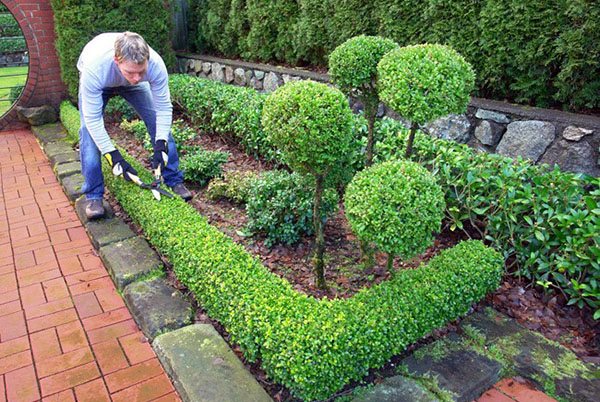

Care advice
You should understand the features of both planting and caring for the cotoneaster, so we decided to dwell on some of the nuances of this process. Frequent watering is not necessary for a cotoneaster unless it grows in arid areas. But we advise you to water every month at the rate of 10 liters per bush to keep the plants looking healthy and beautiful.
You should also get rid of weeds on an ongoing basis and loosen up to 15 centimeters. After that, proceed to the process of mulching up to 8 centimeters using peat. Add organic fertilizers in the spring when digging up the soil surrounding the cotoneaster. Add complex dry fertilizers in parallel. In summer, top dressing with potassium sulfate and superphosphate is useful.
In the cold season, the plant is covered with peat or dry foliage. The protective layer should be up to 6 centimeters. Bend the tall branches to the bottom of the plant so that the buds are preserved at low temperatures. You can also cover the bushes with snow.
As for diseases, the most characteristic of this plant is fusarium. If you find this type of fungus, immediately remove the parts of the plant that are affected, and also treat the plant and the ground around it with a fungicide. Otherwise, the leaves will turn yellow and fall off, and the flowering process will slow down.
Also, in a living fence from a cotoneaster, aphids, scale insects, sawflies, apple moth, yellow bear and spider mites can start. Treat the plant with insecticides if you notice the appearance of unwanted insects. At the initial stages of infection, you can spray the plant with a decoction of wormwood, garlic tincture, infusion of potato tops or a folk remedy based on yarrow to prevent possible pests and disease.
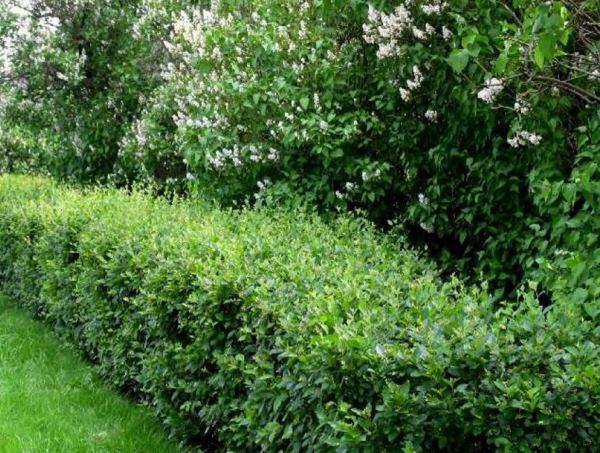

Brilliant cotoneaster: photo, planting and care
Landing features
Despite the fact that such plants quickly take root in spring conditions and survive the planting process favorably, it is better to consider in stages how to plant a cotoneaster for a hedge. This can be done in early spring or at the end of the autumn season (late September - early November), if these are plants with an open root system, and during the summer, if it is closed. If there is little snow in your area during the winter, choose deciduous varieties.
We recommend preparing the soil from turf, peat (or compost) and sand with large granules in a ratio of 2: 1: 2. Add lime to it, allocating about three hundred grams for each square of the landing zone.
At the preparation stage, you should also consider the height of the hedge.Given the height of the cotoneaster bush, we recommend staying on the option of a not too high fence with dimensions of about one and a half meters. And miniature shining cotoneaster bushes can be planted around curbs and recreation areas.
Now you should calculate how many seedlings you need. If you plan to plant a cotoneaster for a thin hedge of great height, you will need three plants for each linear meter of the fence (they will be located at a distance of 0.3-0.4 m from each other). And for a low hedge, take 4-5 small bushes for each running meter: as a rule, they are placed in a checkerboard pattern, forming two rows.
Attention! Do not plant the cotoneaster in three rows, otherwise the growth process will be slower and the risk of spreading the fungus increases.
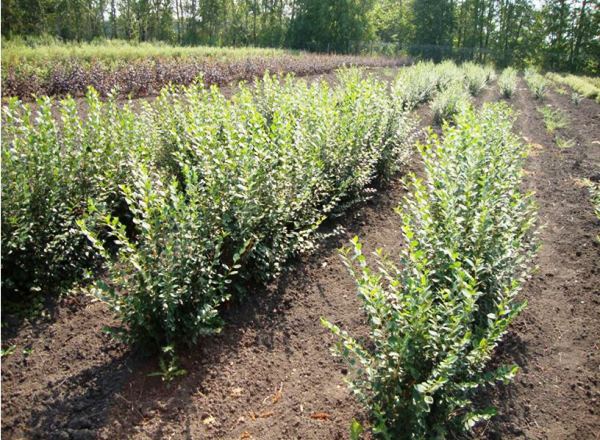

When the location and plants are selected, you can start digging trenches. They should have a depth and width of 0.6-0.8 meters, since the roots of the cotoneaster will grow in the future. Lay expanded clay or gravel at the bottom, as well as a sand-sod-peat mixture. Fertilizing is optional, but you can use compost.
Now you can start planting the cotoneaster, focusing on the selected seating scheme.
Breeding features
Shining cotoneaster reproduces by seeds, layering, cuttings. Growing from seeds is not an easy process. In nature, this variety of cotoneaster is rare. This is due to poor seed germination. Therefore, the sowing should be dense, because no more than 50% of the seeds will sprout.
You need to replant young shrubs in two years. In the first year, the plants are stretched to a height of 20-30 centimeters. The cotoneaster will acquire many new branches and splendor only in the second year of growth. But he begins to bloom at the age of five.
Despite the laboriousness of the seed propagation process, this method is the most economical. And if there is a desire to see the whole process of growth from the very beginning and there is no time limit, then you can use these tips.
Shrubs are usually transplanted in the spring or fall. But reproduction by cuttings is carried out in the summer - from mid-July to early August. For rooting, green cuttings are taken, which are planted in a mixture of peat and sand.
After rooting, the cuttings are transplanted and covered with foil to create a greenhouse effect. This will contribute to their good growth and formation.
Technology and scheme of planting a cotoneaster for a hedge
Before you start planting the cotoneaster, you will need to moisten the soil in containers with seedlings so that they can be easily removed and the roots are not damaged. After that, you can proceed to placing the bushes in the open field.
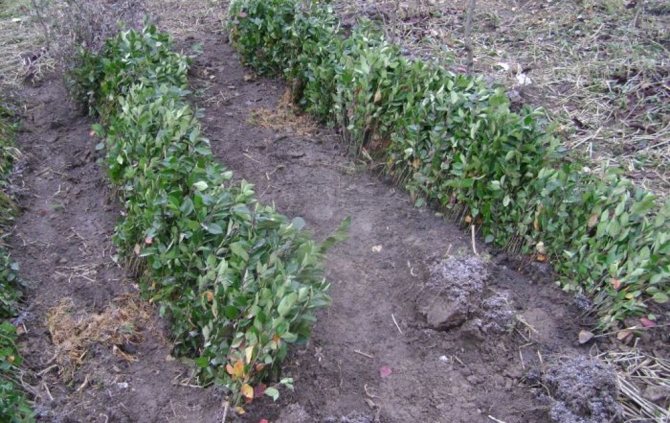

Cotoneaster seedlings are planted to a depth of 30-40 centimeters.
The sequence and scheme of planting culture is as follows:
- First, you need to dig a trench 0.5 m deep and wide.
- Drainage should be placed at the bottom of the groove with a layer of at least 20 cm to prevent moisture stagnation at the roots. For these purposes, you can use gravel, expanded clay or broken bricks.
- It is necessary to pour the soil mixture on the drainage layer in a small hill, and then remove the seedlings from the containers and place them in a prepared place, keeping a distance of 50 cm between the plants, depending on the planting plan.
- After that, the plants are sprinkled with soil, tamped down and watered abundantly.
When the work is completed, you need to cover the soil with roots with tree bark or dry peat. This will help retain moisture and protect the underground part of the plant from freezing, especially if the bushes are planted in the fall.
How to care
The evergreen shrub withstands the pruning process very well. The cotoneaster needs to be constantly cut, to eliminate wilted processes that are knocked out of the common branches. Regular clipping encourages crop growth, making the shrub appear more compact and thicker.The newest shoots grow rapidly, for this reason, it is possible to extract them at 3 part of the length of the annual growth of branches. This must be considered when creating a specific plant shape.
Reproduction of cotoneaster by cuttings consists in the following points:
- The most favorable period for propagation by cuttings is the second half of July.
- For rooting, the green parts of the plant are used.
- As a vegetative propagation, the plant is planted in a composition of peat and sand, covered with a film. But how butyl rubber film for a pond is used and how it looks can be seen in this article.
A popular misfortune in this plant is considered to be numerous damage by insects, so you need to adhere to periodic sprinkling until the insects completely disappear. For example, a plant is affected by aphids, moths. There is also a disease that refers to fungal infection of crops and is called fusarium wilting. Withering is also characteristic of the puzeralis. So, you should decontaminate the soil or, if necessary, carry out a transplant.
The video shows the rule of plant care:
In order for the cotoneaster to quickly rise and harmoniously complement the composition of the site, it is necessary to monitor its condition, to get rid of diseases and insects in time:
- In the fight against the yellow bear, insecticides are used.
- When aphids appear in early spring, the culture is sprayed with Nitrafen, and Metaphos is used to control the larvae. Also, some gardeners use folk methods of struggle, including makhorka and yarrow.


- Mole. After flowering, the culture is sprayed with Karbofos. When the situation of the culture is aggravated, and there is no time to wait for the completion of flowering, you can use "Entobkterin".
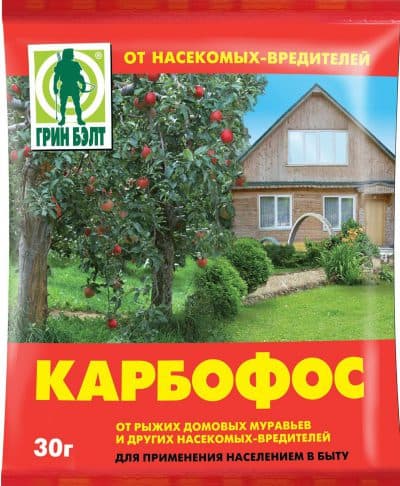

Remedy for larvae
Plant care is easy to guarantee - the plant is watered during planting, and during the rest of the period, the culture is able to be limited for a long time without liquid. In a hot season, seven buckets of liquid are enough for a bush for 14 days.
On the other hand, care includes weed control, which should be done on time. It is advisable to loosen the base under the bushes from time to time, but this must be done carefully so as not to spoil the root system.
Horizontal and creeping cotoneaster: propagation by layering
Among the cotoneaster there are ground cover species. Their shoots hang 10-20 cm above the edge of the earth or spread along it. Consequently, their branches are close to the edge of the soil, and in the creeper they come into contact with it. In the places of these contacts, roots are formed over time. This can happen spontaneously.
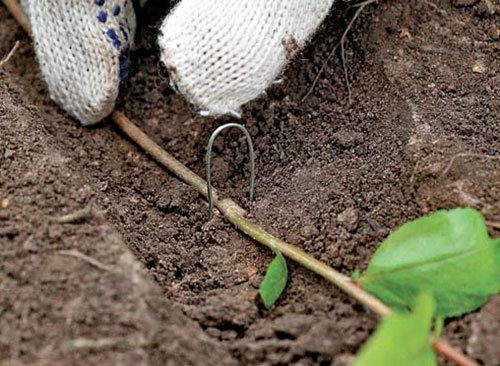

To get a certain number of seedlings of these plants, you can select young shoots and pin them to the ground with metal staples. From above, it is advisable to sprinkle this place with humus.
In spring, with a sharp shovel, they cut a branch at the base of an adult bush and carefully dig out the rooting site. The resulting seedling is transferred to the designated place and planted in the usual way.
This method is one of the most effective, since the young seedling feeds on the mother bush, receives moisture and nutrients through the powerful root system of an adult plant. If you do not touch the plant and let it grow on its own, then over time it will braid a significant piece of land and turn into a living carpet no worse than a grass lawn.
Landing technology
It will depend on what kind of hedge you want to see in the future. If the emphasis is on height, and the width is not important, the plants are planted in one row. A wide curb requires a two-row planting. A green hedge can be straight or curved. All this is important when calculating the amount of planting material. Therefore, first you need to clearly imagine what should turn out, and decide on the landing pattern.
Calculation of the amount of planting material
The number of seedlings depends on how you plant the brilliant hedge cotoneaster. The calculation is summarized in the table and given for 2 running meters of the fence.
| Hedge type | Landing form | Distance between seedlings | Number of plants |
| Single row | In one row | 33 cm | 6 |
| Double row | 2 rows staggered | 50 cm | 8 |
If the hedge is combined, the number of seedlings is calculated taking into account the optimal distance for each type of plant.
Site and soil preparation
The lifespan of a hedge made from a brilliant cotoneaster is more than 50 years, so the planting site is carefully prepared.
- A season before planting, the site is dug up, choosing the roots of weeds.
- For digging, add a little rotted manure and sand.
- If the soil is acidic, it is limed, bringing the pH to 6.6 or slightly higher.
- According to the chosen plan, they dig a trench along the entire length of the future hedge. Its width is 50 cm, and its depth is 70 cm: the root system of the plant is branched and located deeply.
- Drainage 20 cm thick from gravel, broken brick or expanded clay is laid at the bottom of the trench.
- A mixture is prepared for filling the root system from sod soil (2 parts), sand and non-acidic peat (1 part each). If the soil has not been deoxidized, 300 g of dolomite flour or lime is added for each square meter.
It is advisable to purchase seedlings for planting with a closed root system - they take root better and have no restrictions in terms of planting.
Disembarkation dates
Plants of the brilliant cotoneaster have the best survival rate, planted before the buds swell or after leaf fall. In autumn, the period between it and the first serious frosts is short, it may not be enough for the cotoneaster to take root well, therefore spring planting is preferable. There are no such restrictions for container seedlings, but they should not be planted immediately before frost.
Landing rules and features
Young plants need to be prepared before planting. Container - filled with water: it will be easier to remove them from the pot and the soil will not crumble from the roots. In order for seedlings with an open root system to take root better, you need to immerse them in water with a root formation stimulant dissolved in it for five hours. He is bred according to the instructions.
Life cycle and development nuances
The cotoneaster is capable of living a fairly long life - 50 years, subject to good care. Since this plant is completely undemanding, it is quite possible.
The bush is very fast growing, it needs pruning to form the crown. Due to the horizontal growth of the crown, this type of cotoneaster acquired its name. The branches of the bush do not grow, but parallel to the ground.
[collapse]
How to propagate a shiny cotoneaster by layering and dividing the bush
If your cotoneaster is shaped like a short plant, you can try to propagate it by layering. To do this, the shoots must hang above the ground by at least 10-12 cm. The step-by-step algorithm of actions in this case looks like this:
- Choose young summer shoots.
- Press them to the ground with metal staples.
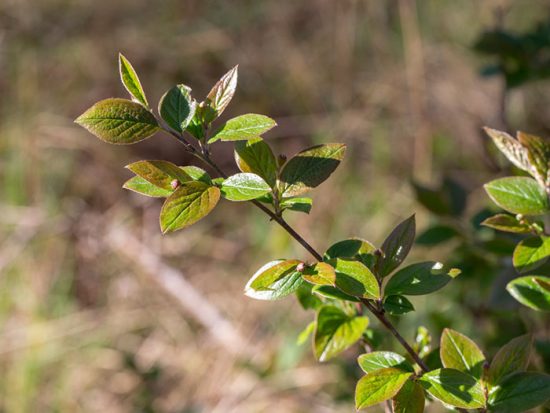

Cotoneaster reproduces well by cuttings - Sprinkle a thin layer of humus on top. Soon, rooted shoots of a new seedling should appear from under it. In summer, autumn and winter, the seedling will be fed by an adult plant, while developing its root system in parallel.
- In March, chop off the branch at the very base of the mother plant.
- Dig up a young cotoneaster and transplant to the desired location.
The fastest way to get a new plant is to split the mature plant apart. Each of them will grow into an independent viable specimen. Of course, if your cotoneaster grows in a hedge, this method of reproduction will destroy its beauty. But in the case of a normal group landing, division is quite effective.
Gently spread the parts of the bush with a sharp object.Each of them should contain a root, branches and shoots. The best time for surgery is spring or autumn. Immediately deepen the resulting seedlings and add them to the ground to a permanent place. Whatever the method of propagation of the cotoneaster, remember that a young plant needs protection from frost.

